Kyrgyzstan
Recapping A Longer-Than-Expected Visit To The Visa-Free ‘Stan
Market day in Osh, Kyrgyzstan. March 3, 2015
Kyrgyzstan (February 22 – March 4 2015)
From killing time in the capital Bishkek, a tree infested, Soviet-era architectural nirvana, to escaping the Russified north to the true feel of a Central Asia town in historic Osh, a look at 11 days of visa-free travel in the Central Asian state of Kyrgyzstan, the 2nd smallest of the five ‘Stans.
Kyrgyzstan/Kyrgyz Republic
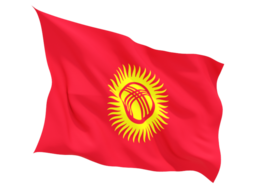 Kyrgyzstan, officially Kyrgyz Republic, is a Central Asian country of incredible natural beauty and proud nomadic traditions. Landlocked, mountainous & geographically isolated, it’s the second smallest of the 5 Central Asian states, larger than only Tajikistan, with a population of 5.7 million. The country was annexed by Russia in 1876 but, and despite standing up to the Russians in 1916, a move that saw them losing about one-sixth of their population, the Kyrgyzs didn’t achieve independence from the then Soviet Union until 1991 – it was the first of the 5 Central Asian ‘Stans to declare independence & at the time Kyrgyzstan could boast the only non-communist party backed president in the Central Asian region. It hasn’t exactly been smooth sailing since in a country where democratization is a work in progress – violent demonstrations against government-level corruption & nepotism rocked the country in 2005 & as recently as 2010. That said, the country has one of the more progressive post-Soviet governments in the region; it’s liberal visa policy means that it’s the only Central Asian state where the majority of visitors do not require a visa, a welcome relief given the hoops one must jump through to secure visas for elsewhere in the region.
Kyrgyzstan, officially Kyrgyz Republic, is a Central Asian country of incredible natural beauty and proud nomadic traditions. Landlocked, mountainous & geographically isolated, it’s the second smallest of the 5 Central Asian states, larger than only Tajikistan, with a population of 5.7 million. The country was annexed by Russia in 1876 but, and despite standing up to the Russians in 1916, a move that saw them losing about one-sixth of their population, the Kyrgyzs didn’t achieve independence from the then Soviet Union until 1991 – it was the first of the 5 Central Asian ‘Stans to declare independence & at the time Kyrgyzstan could boast the only non-communist party backed president in the Central Asian region. It hasn’t exactly been smooth sailing since in a country where democratization is a work in progress – violent demonstrations against government-level corruption & nepotism rocked the country in 2005 & as recently as 2010. That said, the country has one of the more progressive post-Soviet governments in the region; it’s liberal visa policy means that it’s the only Central Asian state where the majority of visitors do not require a visa, a welcome relief given the hoops one must jump through to secure visas for elsewhere in the region.
Read all postings from the road in chronological order or jump to specific postings using these links.
Bishkek, The Capital || Cholpon-Ata || Bishkek – The Wait || Osh, The South
Posts From The Kyrgyzstan Road (Presented In Chronological Order)
BISHKEK - THE CAPITAL
Date || February 24, 2015
Location || Bishkek, Kyrgyzstan ( )
)
Today is day 2 & a bit in Kyrgyzstan, officially known as the Kyrgyz Republic, country number 2 on this little Central Asian junket of mine. I’m in the capital, a place called Bishkek, having crossed over the border from Kazakhstan a few days ago.
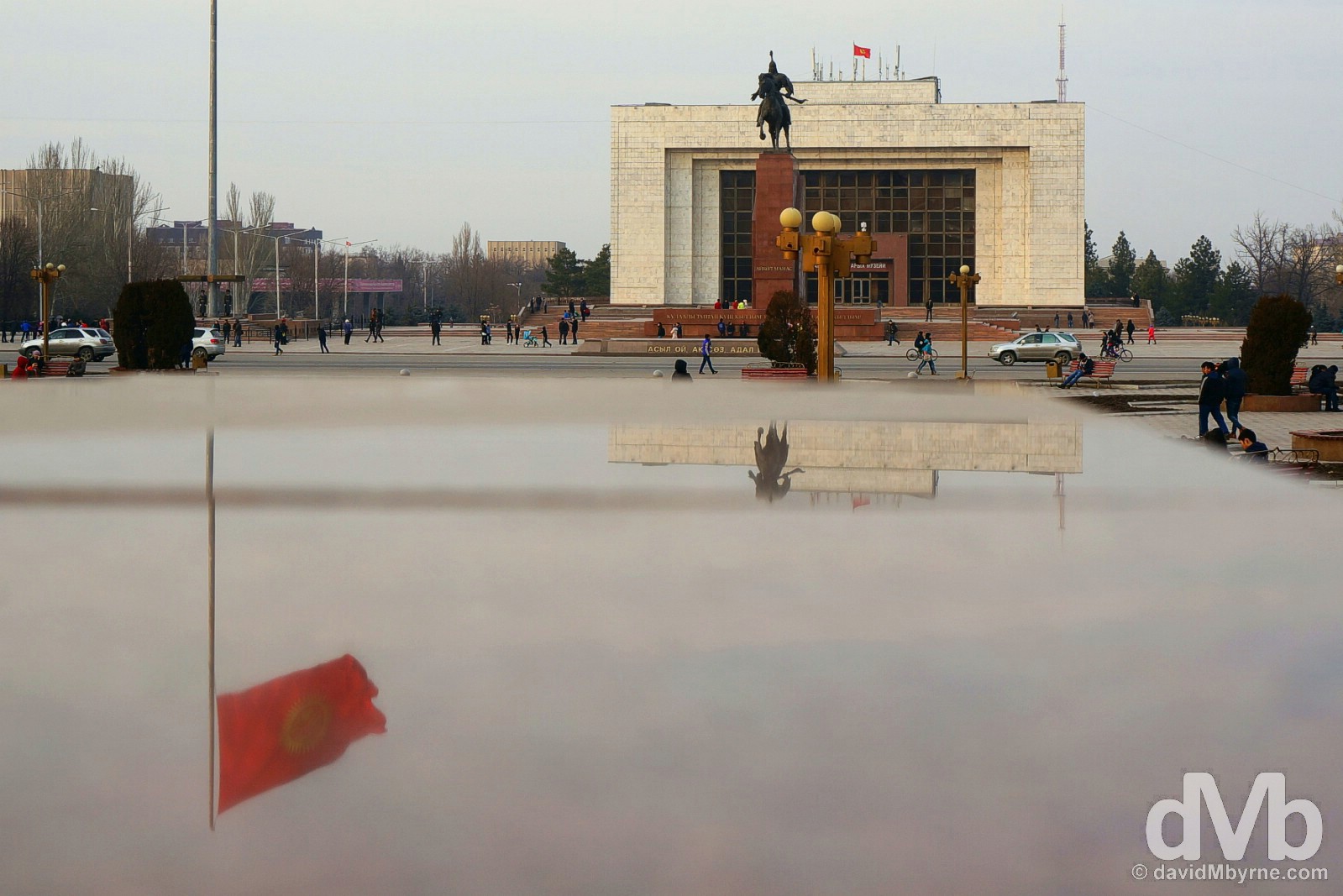
Reflections in Ala-Too Square, the main square & civic centre in Bishkek, a city named after the churn used to make kymys – alcoholic, fermented mare’s milk. Now that can’t be a good omen. Bishkek, Kyrgyzstan. February 23, 2015.
Unless you like Soviet-era architecture & monuments then Bishkek, a young city short on history & sights, doesn’t offer much in the way of attractions, doesn’t offer up many reasons to detain travellers for longer than is necessary.
Lonely Planet
The majority of those who do visit the city generally pass through en route to the rural and high altitude-based attractions Kyrgyzstan is worth visiting for – snow-capped alpine vistas, endless grassy rolling plains, hidden lakes, forested valleys and basins dotted with nomadic, yurt-dwelling Kyrgyz herders. The thing is, there’s not much of that on offer this time of year – Lonely Planet warns to ‘think twice about a winter visit unless you’ve come to ski’. I’ve come but I don’t ski.
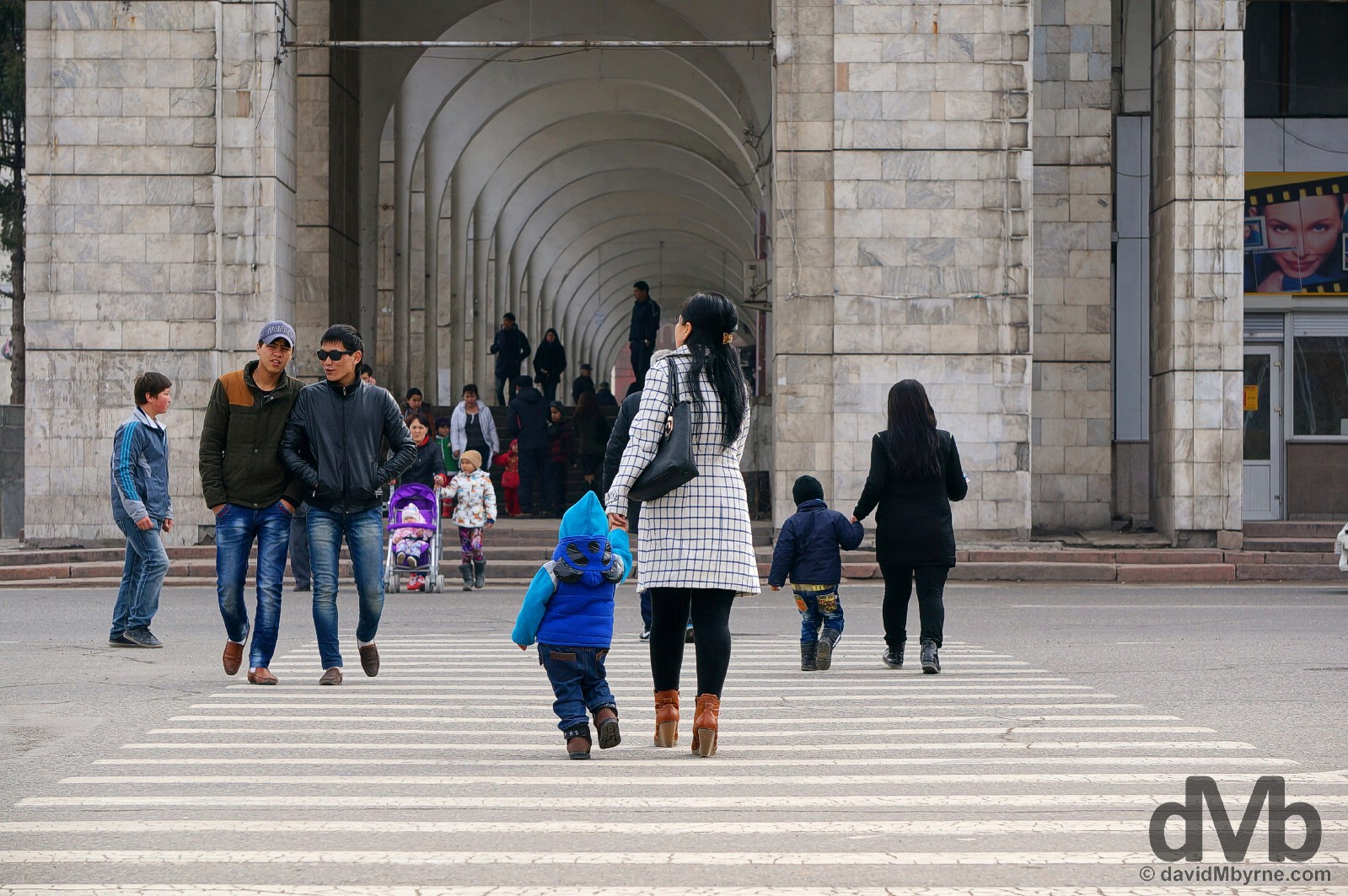
Crossing Chuy Prospektesi in central Bishkek, Kyrgyzstan. February 23, 2015.
Just like Almaty, Kazakhstan, before it, I’m waiting here in Bishkek. Waiting for a visa to come through, this time for Iran. I can’t leave the country until I get it. I do plan a few trips from the city to help pass the time but for now Kyrgyzstan has been Bishkek & Bishkek alone. I could have waited a bit longer in Almaty but I decided to spend time doing nothing in a new city, & country, as opposed to a familiar one.
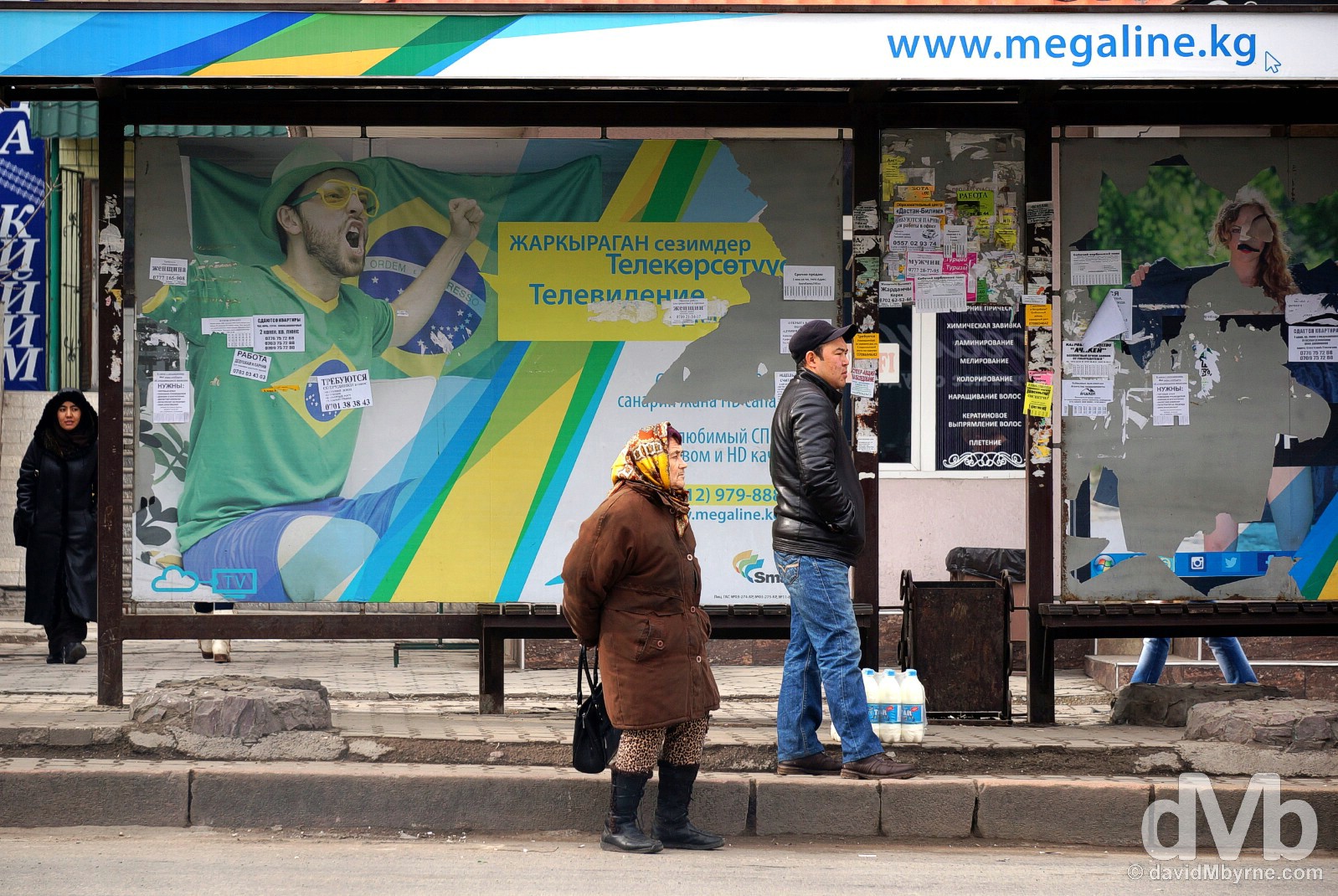
Waiting for the bus on Moskva/Moskovskaya Street in Bishkek, Kyrgyzstan. February 23, 2015.
So, I’m into my third day of biding my time in Bishkek, more than is needed, a lot more than is needed, to ‘do’ this city. I’m not bored. Yet. I would be if I didn’t enjoy looking at boxy Soviet-era architecture. I do. I really do. And the more I do, the more I realise I do. And I don’t think I’ve been to a city – not even one in Eastern Europe, or even Mother Russia herself – where I enjoyed looking at massive, boring, boxy, uninspiring, neglected & unkempt piles of concrete & marble as I have done here in the Kyrgyz capital; Bishkek is the Eastern Europe of 30 years ago, a veritable open-air museum relic of the former Soviet Union Bloc, the sort of place that would no doubt arouse nostalgia in people who knew and long for the old Soviet Union. Short on so-called attractions it may be, but I found the city’s planned grid layout of wide boulevards flanked by irrigation canals & large trees, buildings with marble façades, and Soviet apartment complexes strangely photogenic. Very photogenic. Here are a few more, quite a few more, architecture-heavy captures from my time in the city so far.
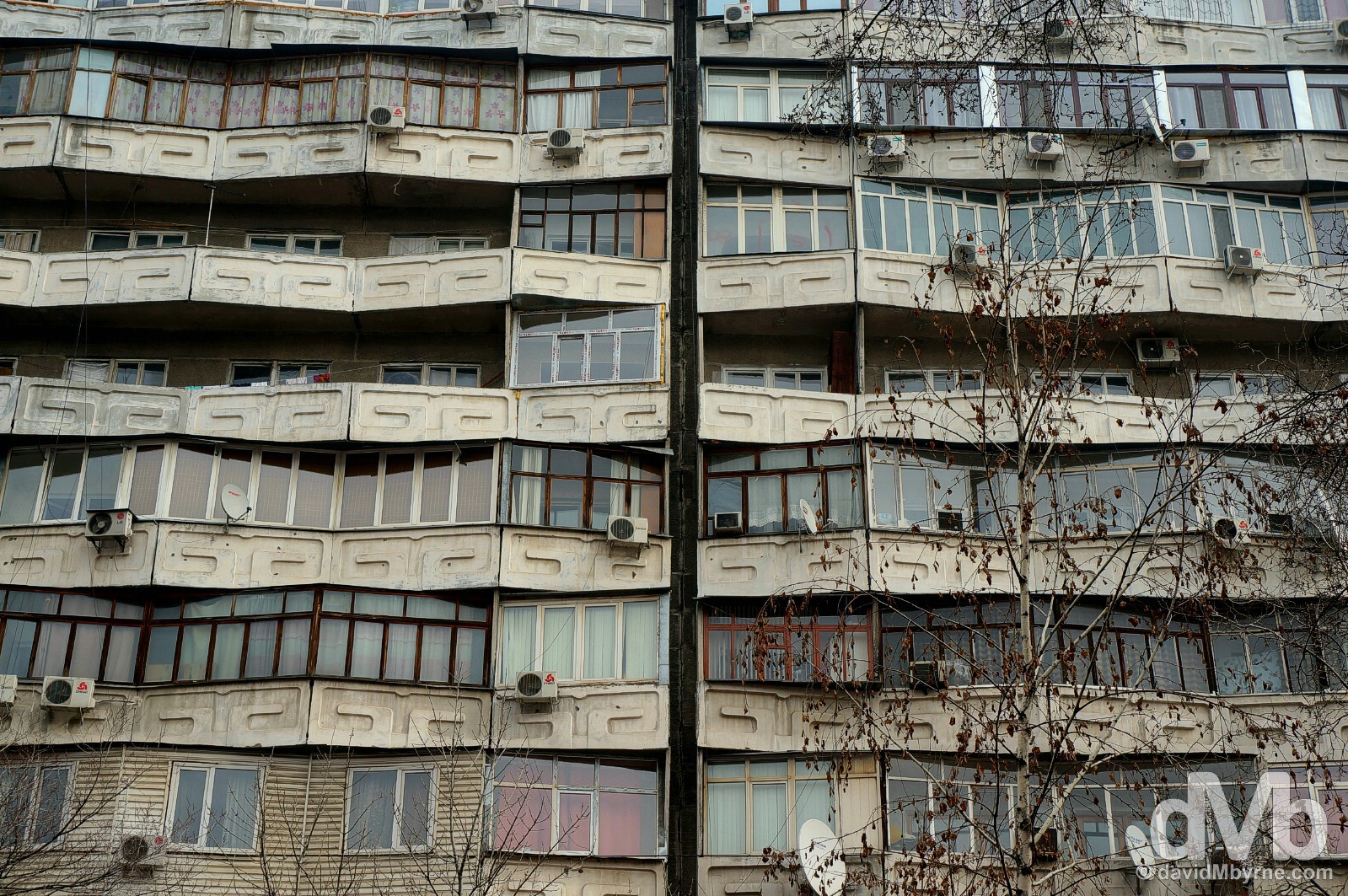
An aesthetically challenged apartment building, something Bishkek has a lot of. I mean, look at that mess. Abdrahmanov/Sovetskaya Street, Bishkek, Kyrgyzstan. February 23, 2015.
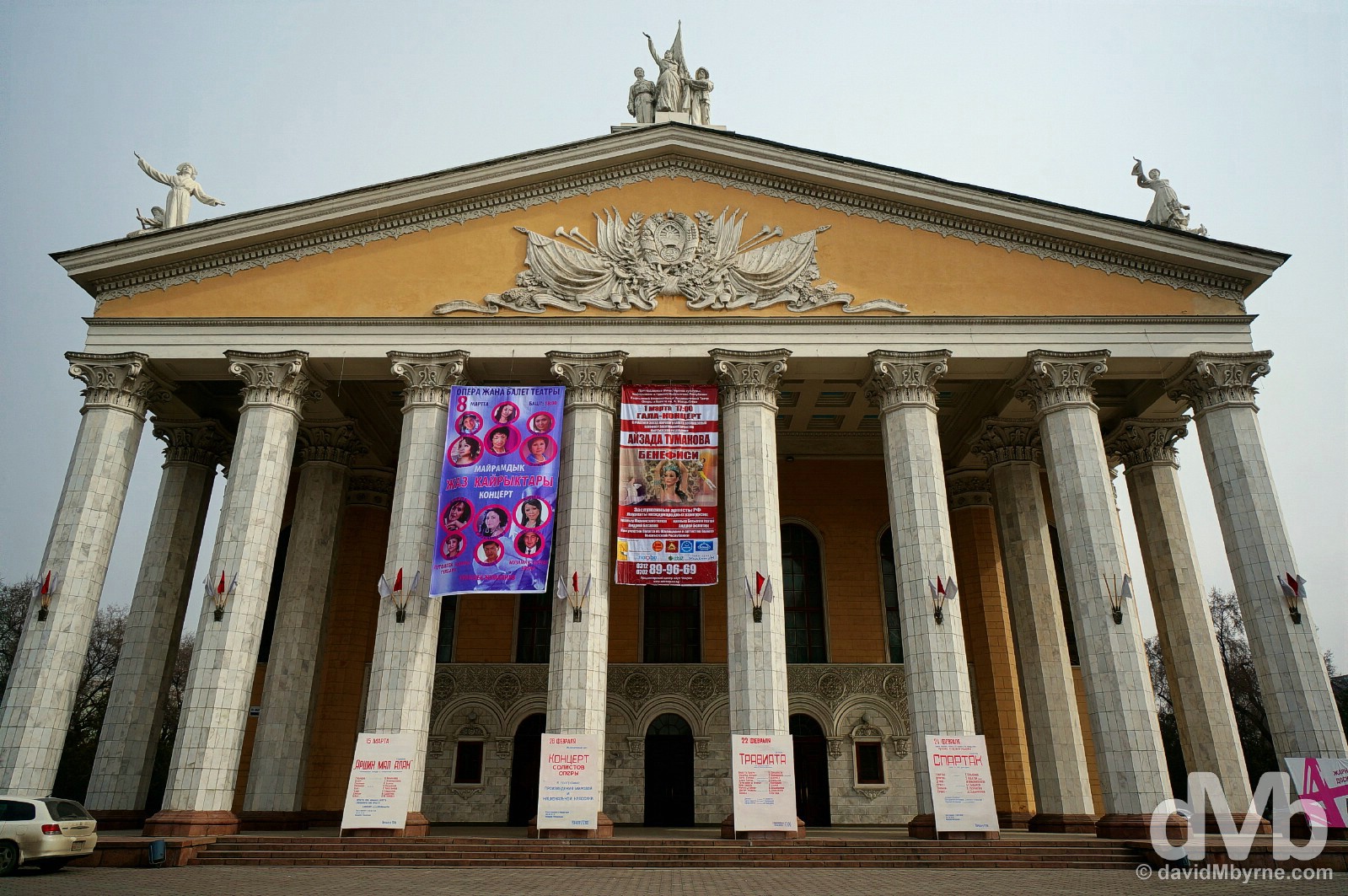
Probably the city’s prettiest building is this, the neo-classical State Opera & Ballet Theatre. Bishkek, Kyrgyzstan. February 23, 2015.
Kyrgyzstan is a poor country. That much is obvious when walking the streets of its dusty, infrastructure-challenged capital, and especially after coming from Kazakhstan, the region’s wealthiest country – buildings are decaying/crumbling, roads (those that are paved) are uneven, & footpaths/sidewalks are at best badly cracked and at worst missing altogether. That said, it’s a pleasant city to wander around & with distances relatively short you’re never too far from the next Soviet-era statue, monument or building.
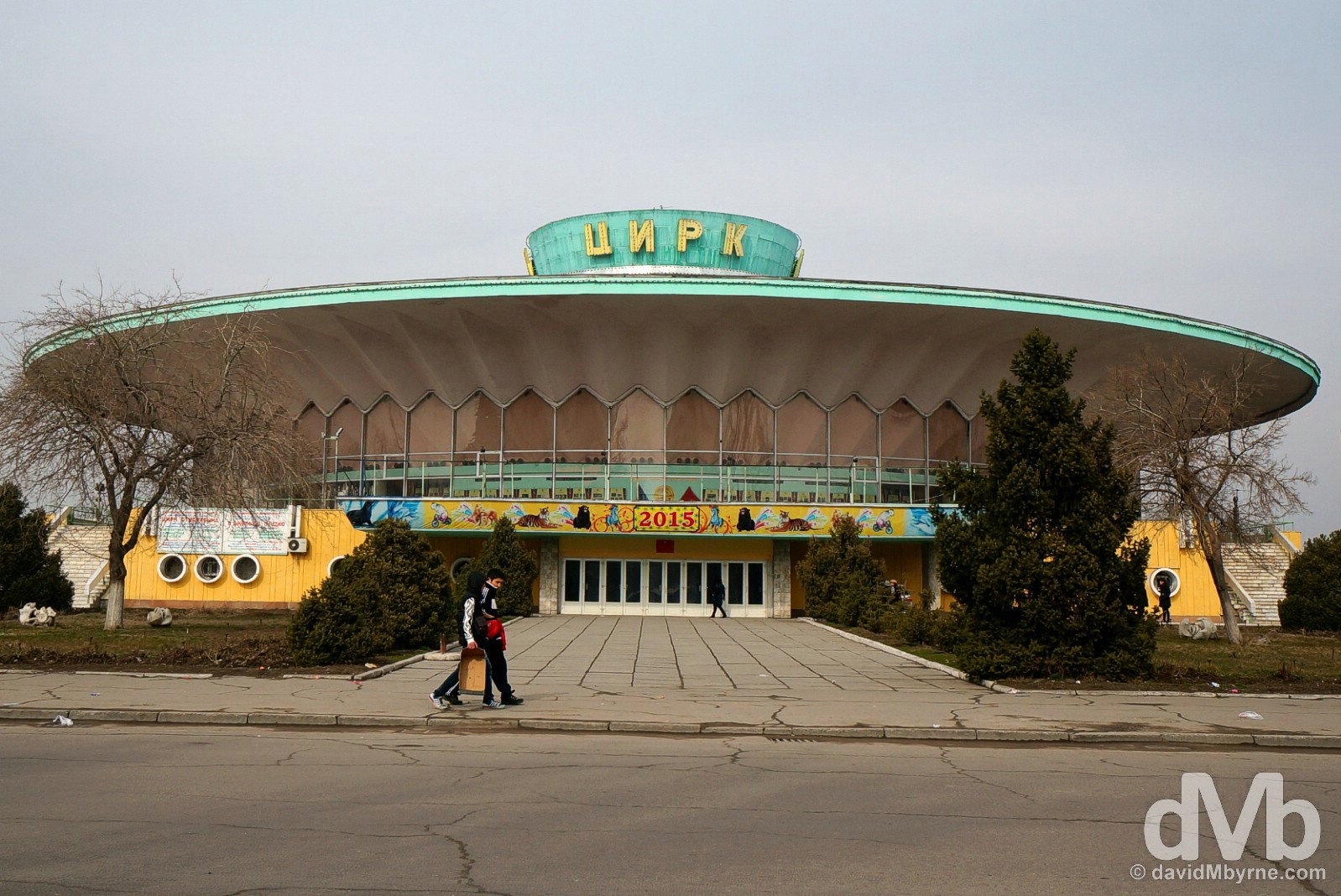
Lonely Planet describes this, the city’s permanent circus, as resembling a ‘1950s UFO’. Enough said. Circus, Bishkek, Kyrgyzstan. February 23, 2015.
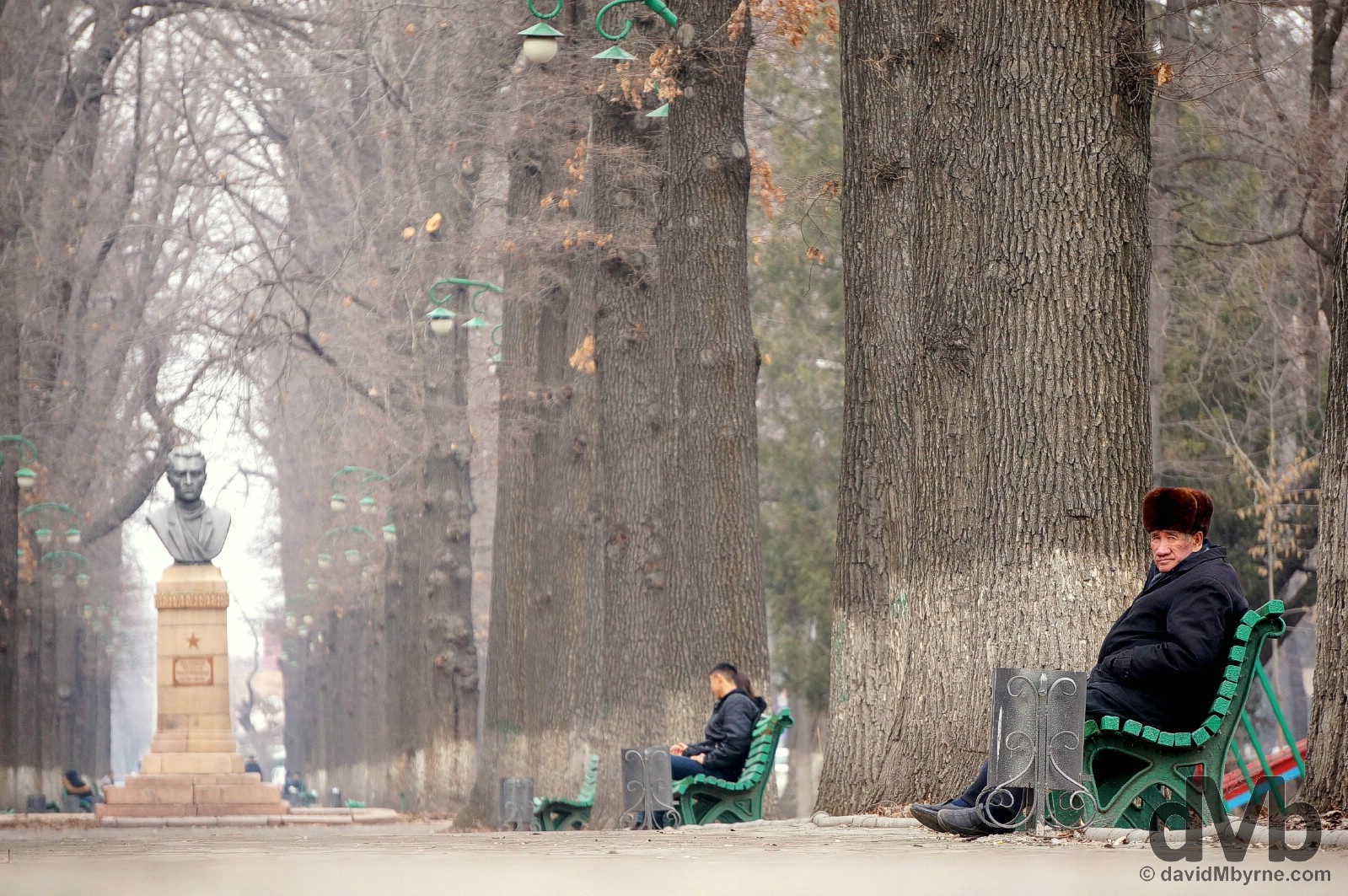
There are a lot of trees in Bishkek. A lot of trees & sometimes it feels like the city was built in a forest. Most streets are lined by them and every so often the grid of tree-lined streets is broken up by a broad, tree-lined walkway as seen here on Erkindik Prospektesi. Oh, and these walkways feature a lot of marble busts on fancy pedestals. Yes, there are a lot of people immortalised in this city. Bishkek, Kyrgyzstan. February 23, 2015.
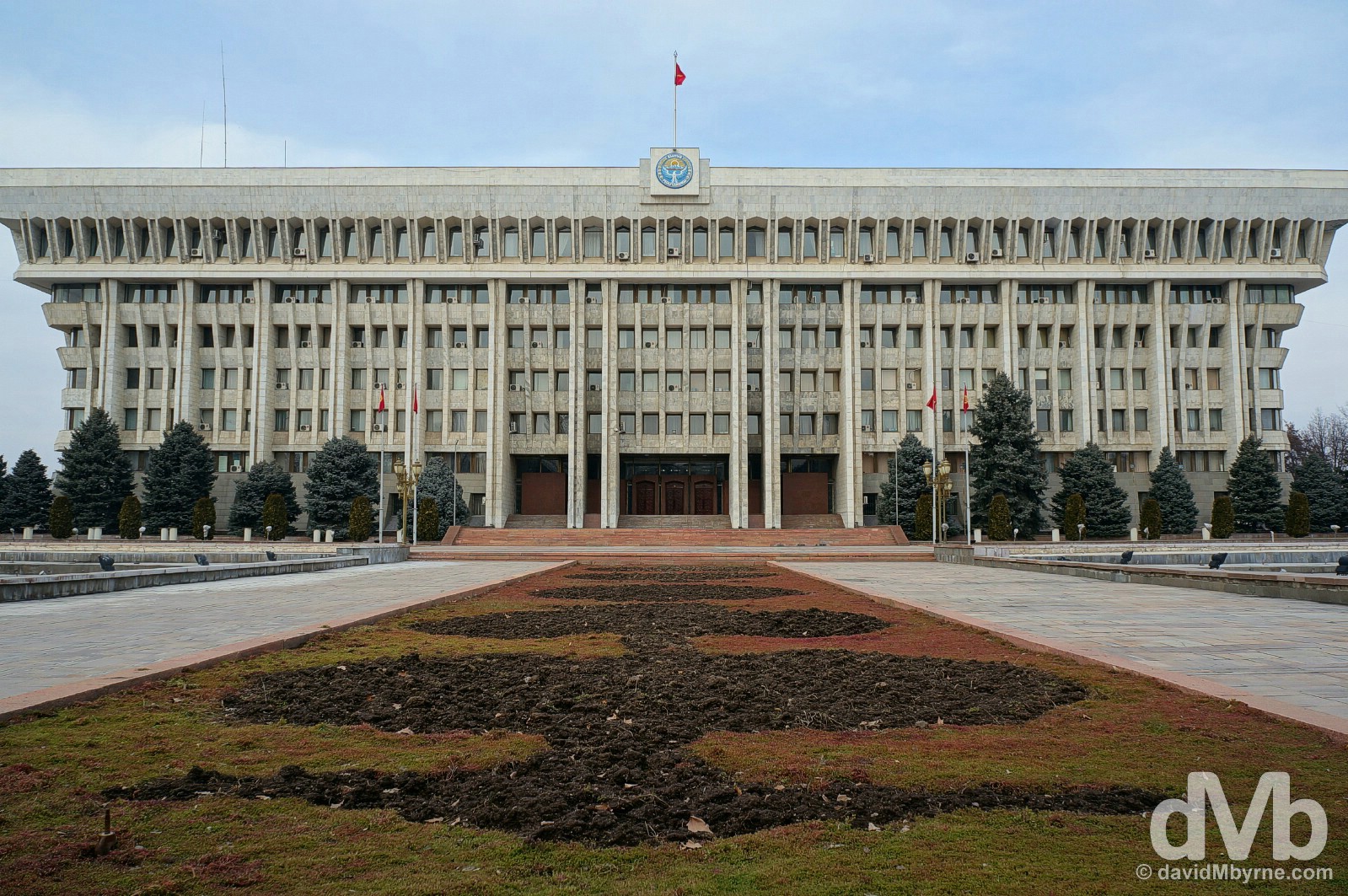
The so-called White House is the office of the Kyrgyz President. The seven-storey marble-covered building was built in 1985 in the Stalinist modern style & is easily the best maintained building in the city. Bishkek, Kyrgyzstan. February 23, 2015.
Ala-Too Square
The city’s main civic space is the city centre Ala-Too Square, a vast expanse of concrete that was until 1991 called Lenin Square. The site of frequent political demonstrations and regular festivals, it was built in 1984 to celebrate the 60th anniversary of the Kyrgyz SSR, at which time a massive statue of Lenin was placed in the square’s center – that statue was relocated in 2003, 12 years after independence from the USSR, and replaced by a triumphant statue of the Kyrgyz epic hero Manas.
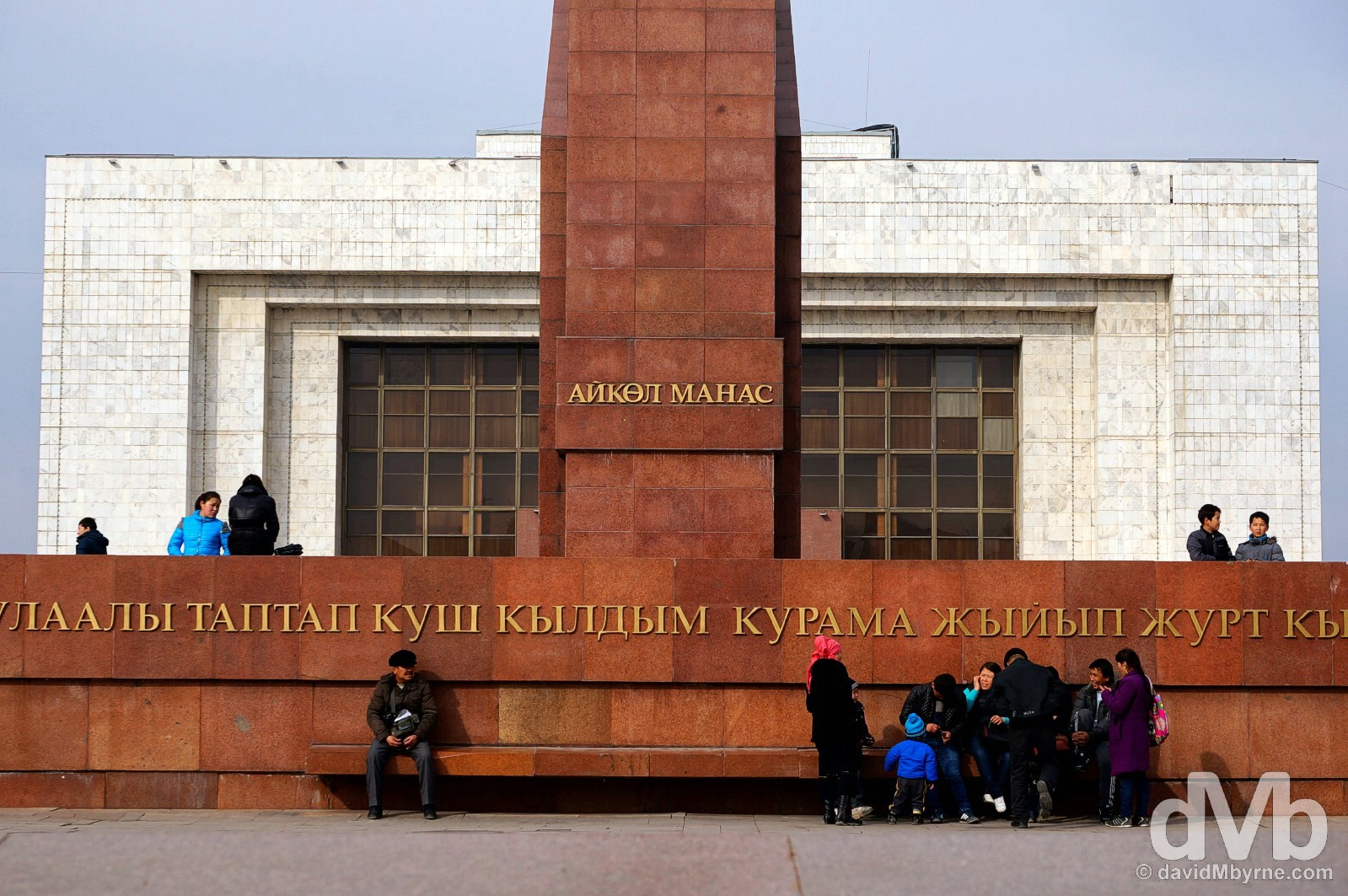
Ala-Too Square is dominated by the massive white marble cube, seen here behind the rusty-coloured marble platform and pillar atop of which is the Manas statue. It – the cube – was built, along with the square itself, in 1984 as a state-of-the-art Lenin Museum (they really loved Lenin around here) but these days it serves as the State Historical Museum. I’ve yet to pay it a visit but I will eventually. There’s not much else to do. Ala-Too Square, central Bishkek, Kyrgyzstan. February 23, 2015.
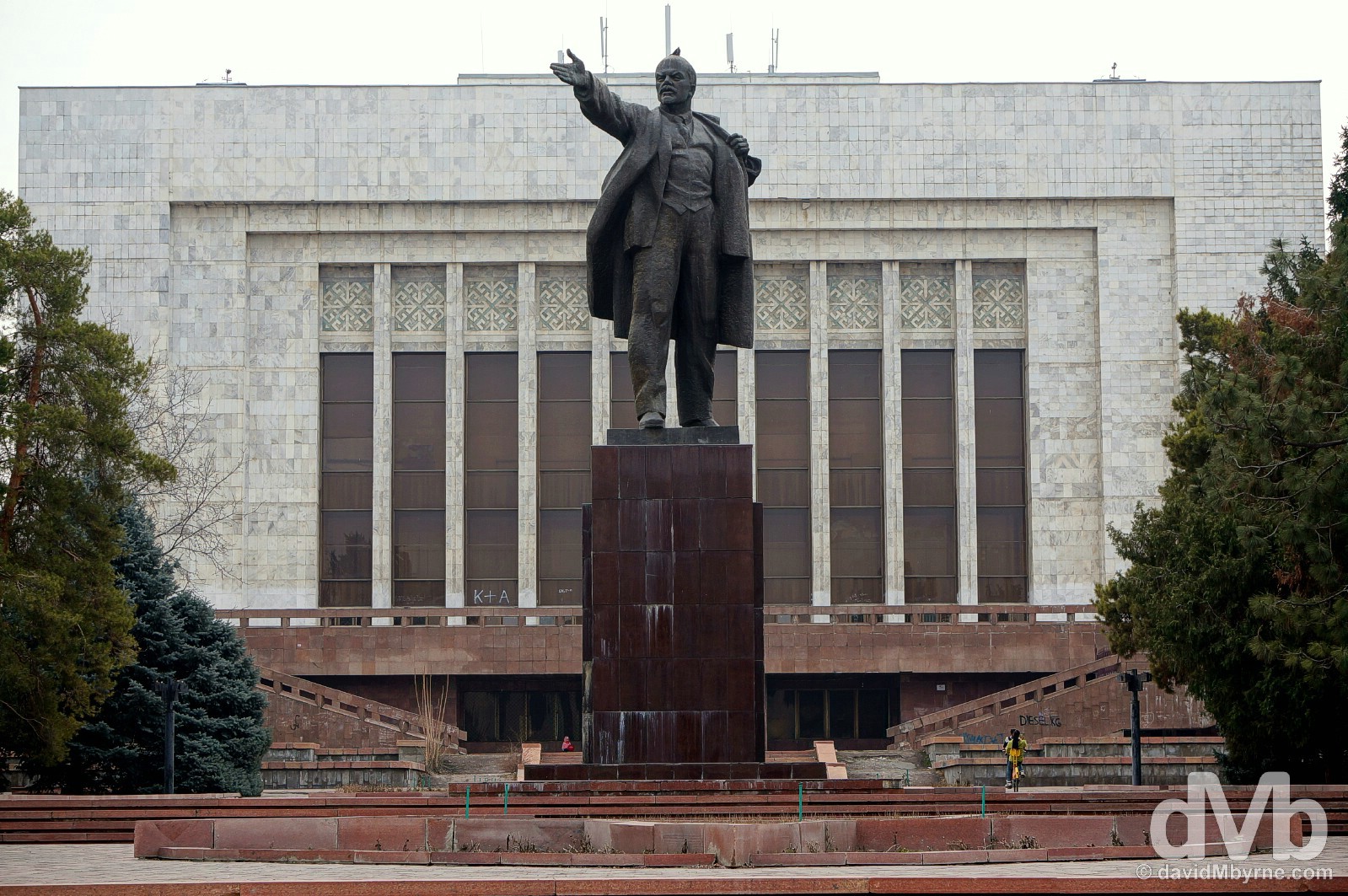
Poor Vlad. The Lenin Statue, which formally resided in the centre of Alt-Too Square, was banished in 1991 to a much less conspicuous location behind the State Historical Museum (and, tut tut, Vlad even has his back to it these days). Personally I’m surprised he’s still standing at all in post-USSR/independent Kyrgyzstan. Bishkek, Kyrgyzstan. February 23, 2015.
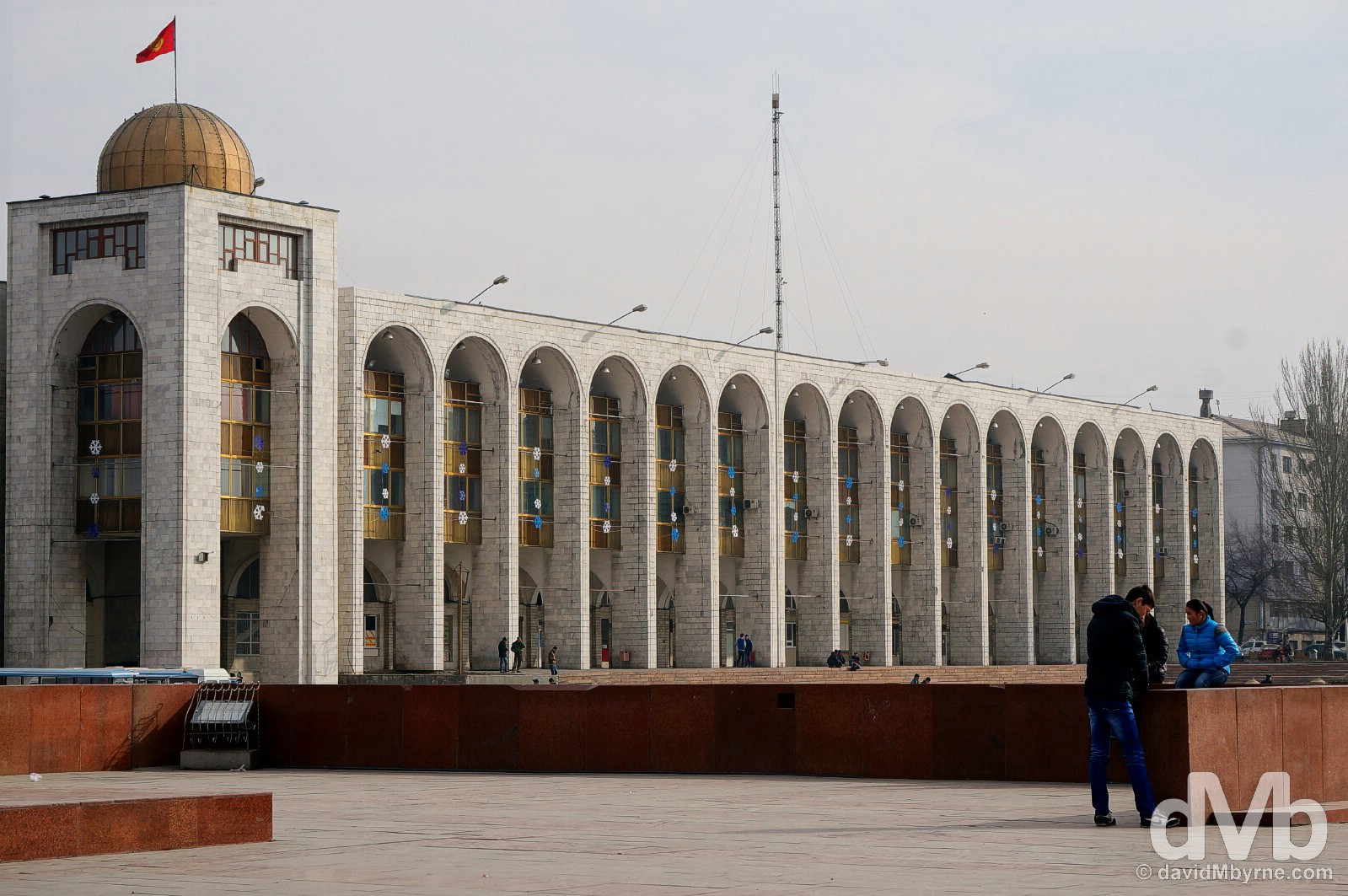
Ala-Too Square in central Bishkek, Kyrgyzstan. February 23, 2015.
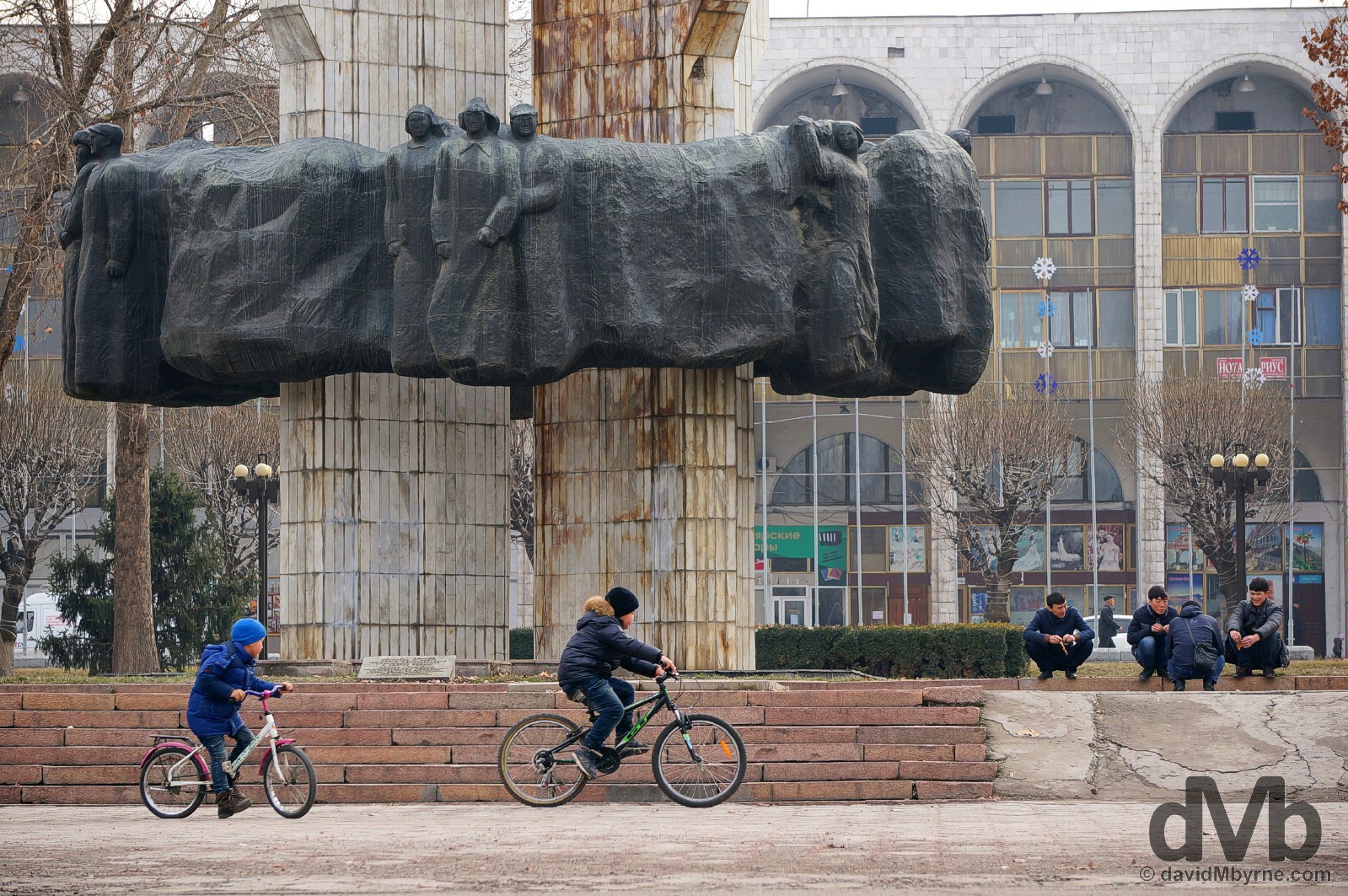
A Soviet-era monstrosity off Ala-Too Square in central Bishkek. I’m not too sure what this monument signifies but it hasn’t seen any upkeep in a long while. Bishkek, Kyrgyzstan. February 23, 2015.
War Memorial
Yes, of course Bishkek has a War Memorial. And yes, of course it’s big.
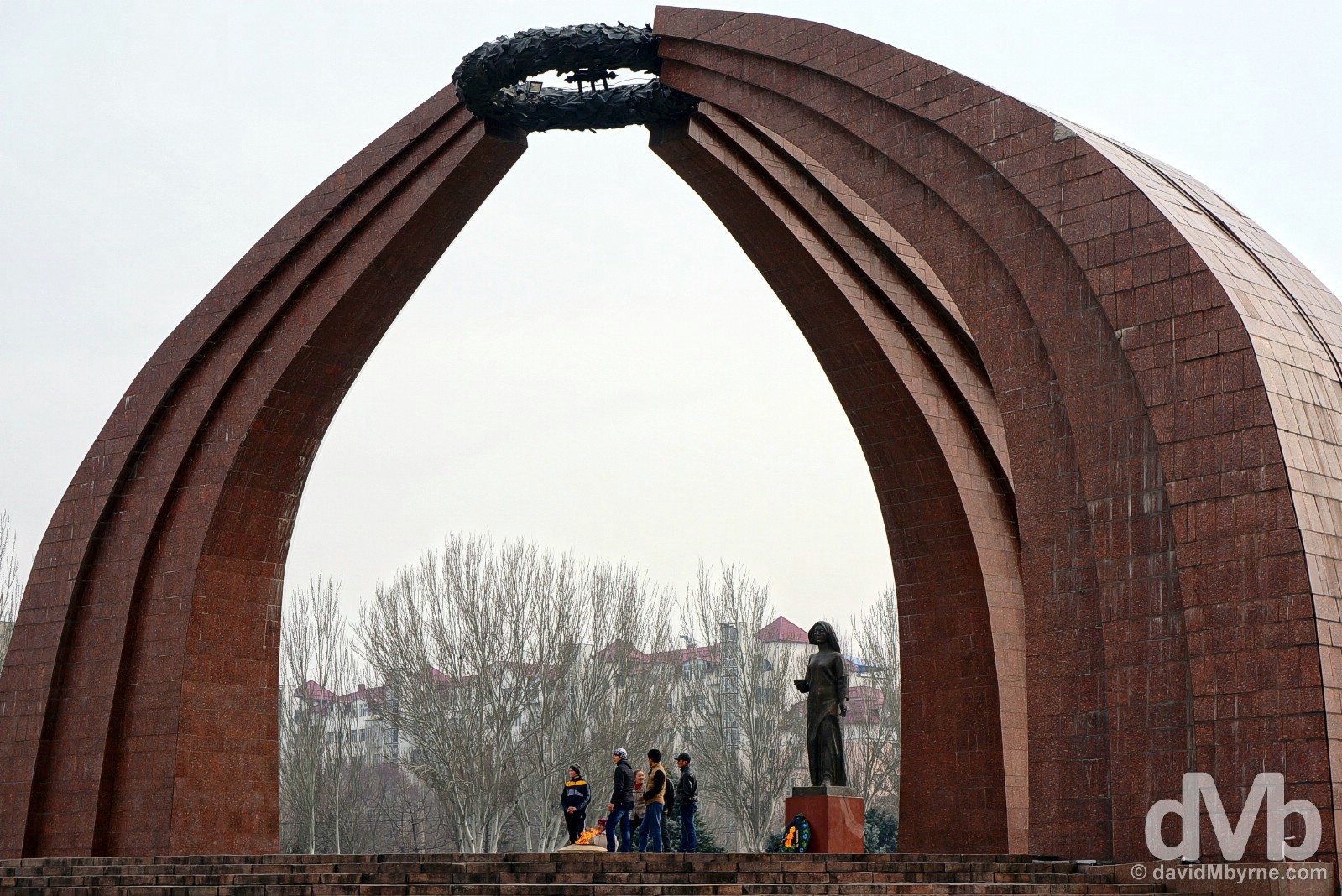
The Bishkek War Memorial, found in the city’s expansive Victory/Freedom Square, is designed to evoke three symbolic yurt – circular, portable & self-supporting domed dwellings originally used by nomadic people of central Asia – struts curving over the requisite eternal flame. Victory/Freedom Square, Bishkek, Kyrgyzstan. February 23, 2015.
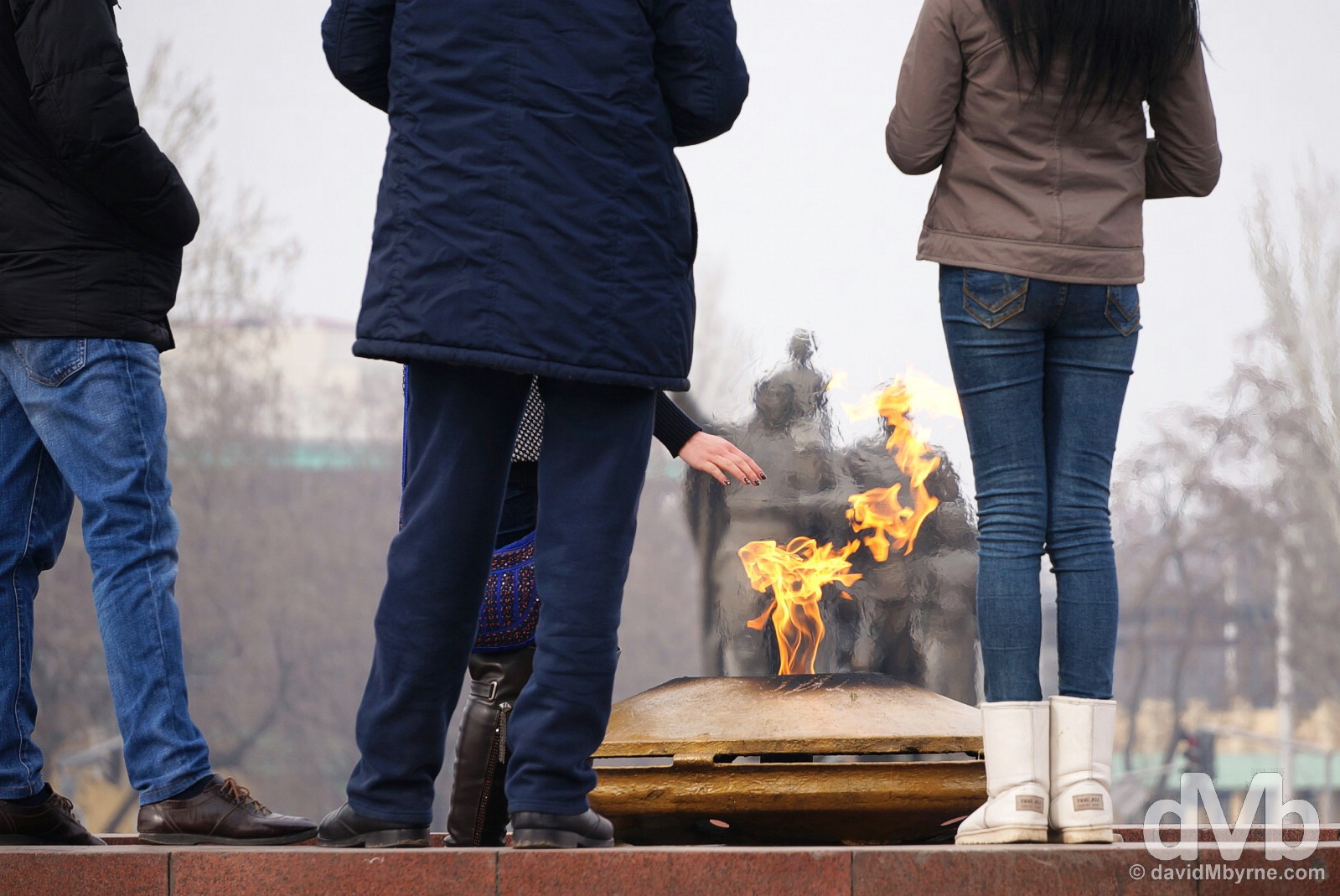
Warming up by the Eternal Flame of the War Memorial in Victory Square, Bishkek, Kyrgyzstan. February 23, 2015.
CHOLPON-ATA
Date || February 26, 2015
Location || Bishkek, Kyrgyzstan ( )
)
I left the city yesterday with the intention of spending the night in the lakeside town of Cholpon-Ata, about 250 kilometres east of Bishkek on the shores of Lake Issyk-Köl, the world’s second-largest alpine lake (after South America’s Lake Titicaca). Things didn’t quite go to plan.
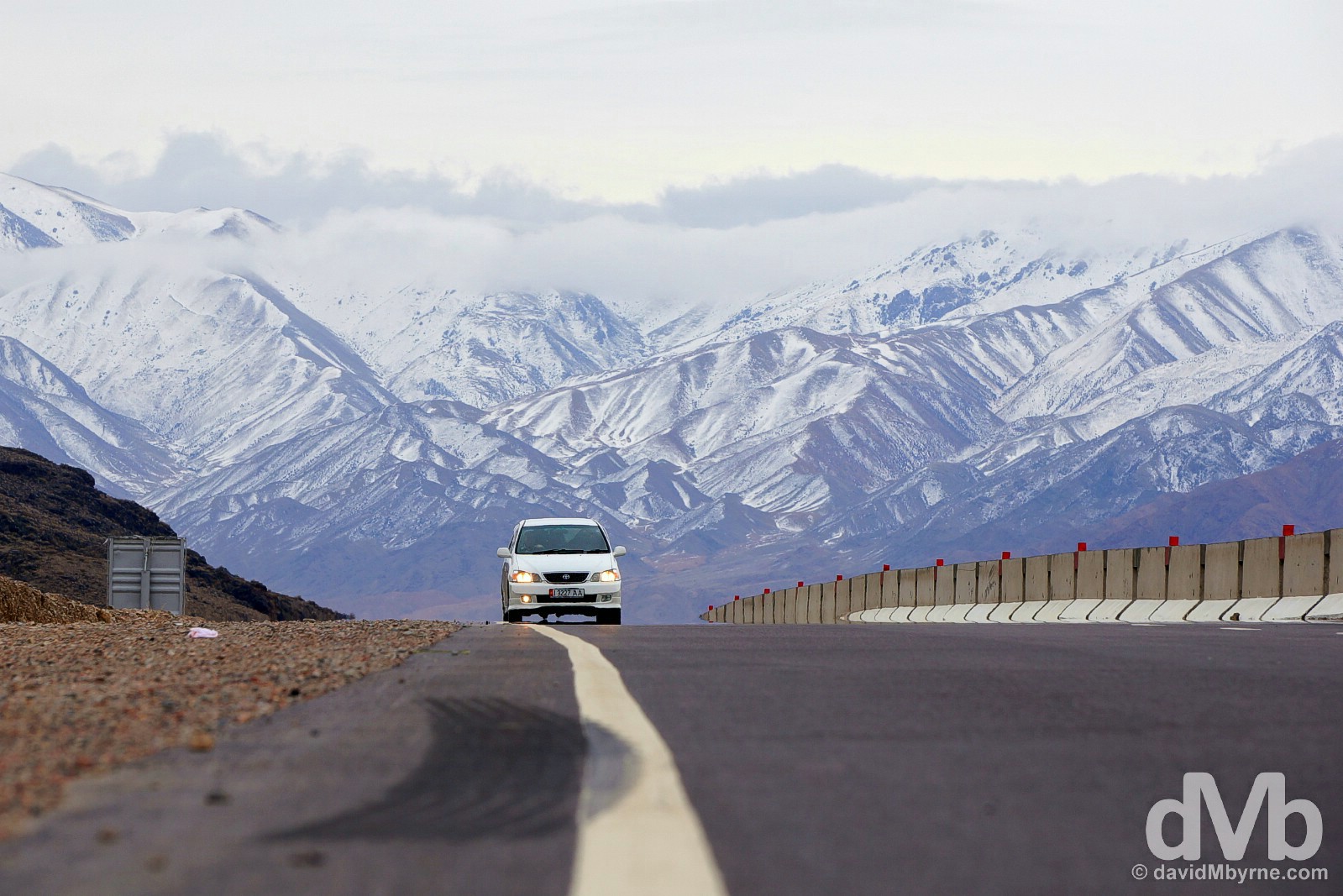
As it turned out, the three-&-a-half-hour drive from Bishkek to Cholpon-Ata was more of a highlight than the destination itself as the views of the Zailiysky Alatau range, the northernmost range of the region’s Tian Shan, from the the A363 Bishkek to Cholpon-Ata road were pretty sweet in parts. I was up among these peaks some 2 weeks ago now, albeit on the other side of them & in a different country, when I visited the Shymbulak Ski Resort outside Almaty in Kazakhstan, which, I’d guesstimate is only about 40-50 kilometres from here as the crow flies. On the A363 from Bishkek to the lakeside town of Cholpon-Ata in northern Kyrgyzstan. February 25, 2015.
Cholpon-Ata
Sitting at an altitude of 1,600 metres, Cholpon-Ata, is just one of many towns dotting the northern shore of the 170 kilometer-long by 70 kilometre-wide Lake Issyk-Köl, a lake that never freezes over, not even during the bone-chilling Central Asian winters (and it avoids doing so thanks to a combination of extreme depth, thermal activity & mild salinity). The town is Kyrgyzstan’s summer resort getaway, one that seemingly has white beaches, Kyrgyzstan’s biggest Ferris wheel (nowhere to be seen), & dozens of hotels, guesthouses, cafes and bars. But Cholpon-Ata is about as seasonal as they come – it a veritable ghost town in winter, or right around about now, & virtually everywhere is closed. I knew this before leaving Bishkek but I still expected some places to be open, especially for a town with a year-round population of over 10,000. But there was very little stirring for the hour I spent walking through the town looking for life (& a bed). That was long enough for me to loop the town & eventually see me hoofing it back to the bus stand for the next transport option out, back whence I came. So all in all I spent 8 hours on two buses getting to and from a lakeside town I spent an hour wandering around, all the while wondering why I even bothered. Oh well, at least I got out of the capital for the day.
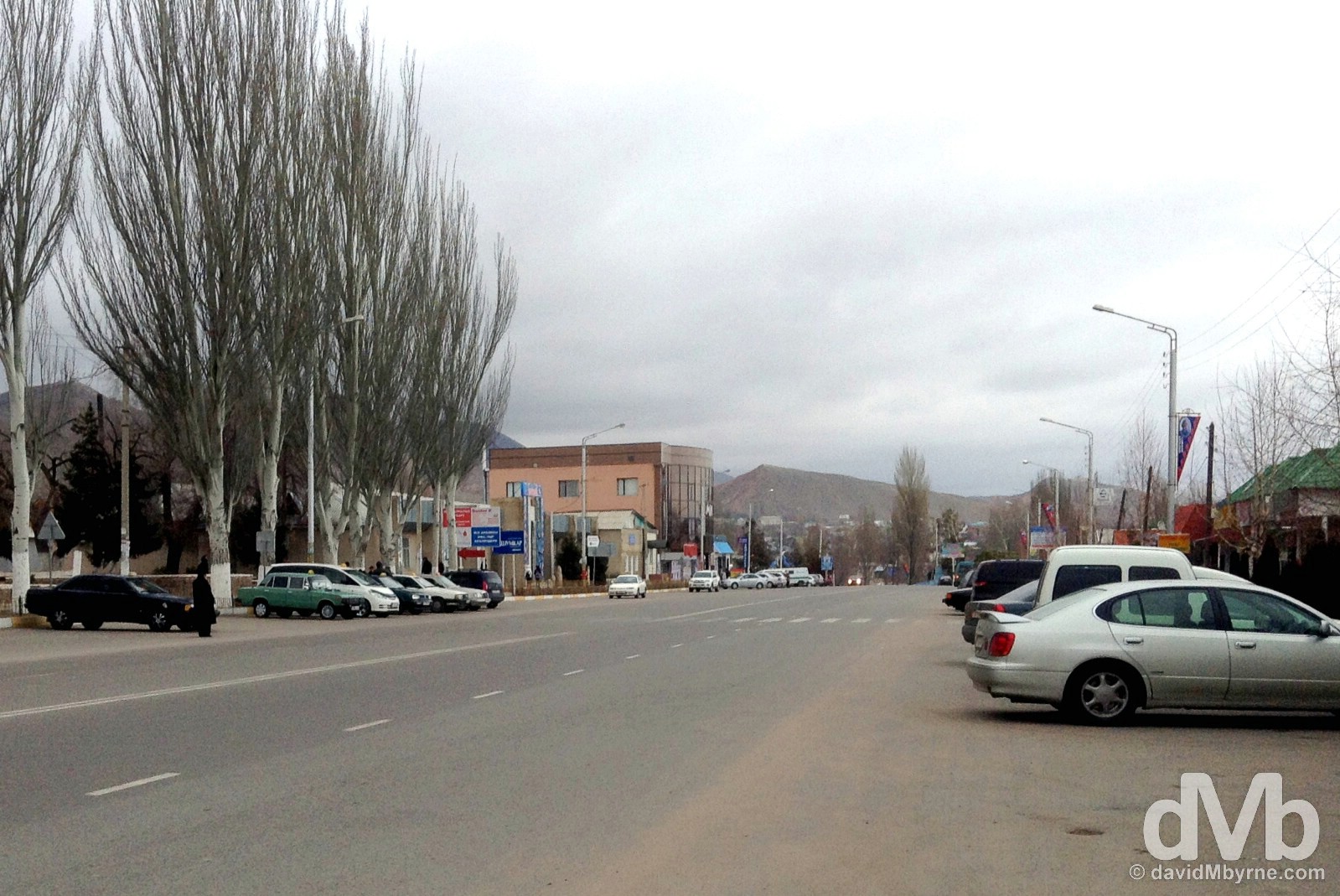
Poor Cholpon-Ata. I didn’t take my camera out of my bag for the whole hour I was in town, but I still had the wherewithal to know I needed some digital reminder of my fleeting visit. And this is it, the A363 passing through town as captured with my iPod. Plenty of cars just not a lot happening. Cholpon-Ata (![]() ) on the shores of Lake Issyk-Köl, northern Kyrgyzstan. February 25, 2015.
) on the shores of Lake Issyk-Köl, northern Kyrgyzstan. February 25, 2015.
BISHKEK - THE WAIT
Date || February 28, 2015
Location || Bishkek, Kyrgyzstan ( )
)
I‘m still here in Bishkek. It’ll be a week tomorrow. A whole week. I commented in my last/first post from the city how I wasn’t yet bored, that after three days in a city that’ll struggle to entertain you for a day. Well make no mistake, I’m bored now.
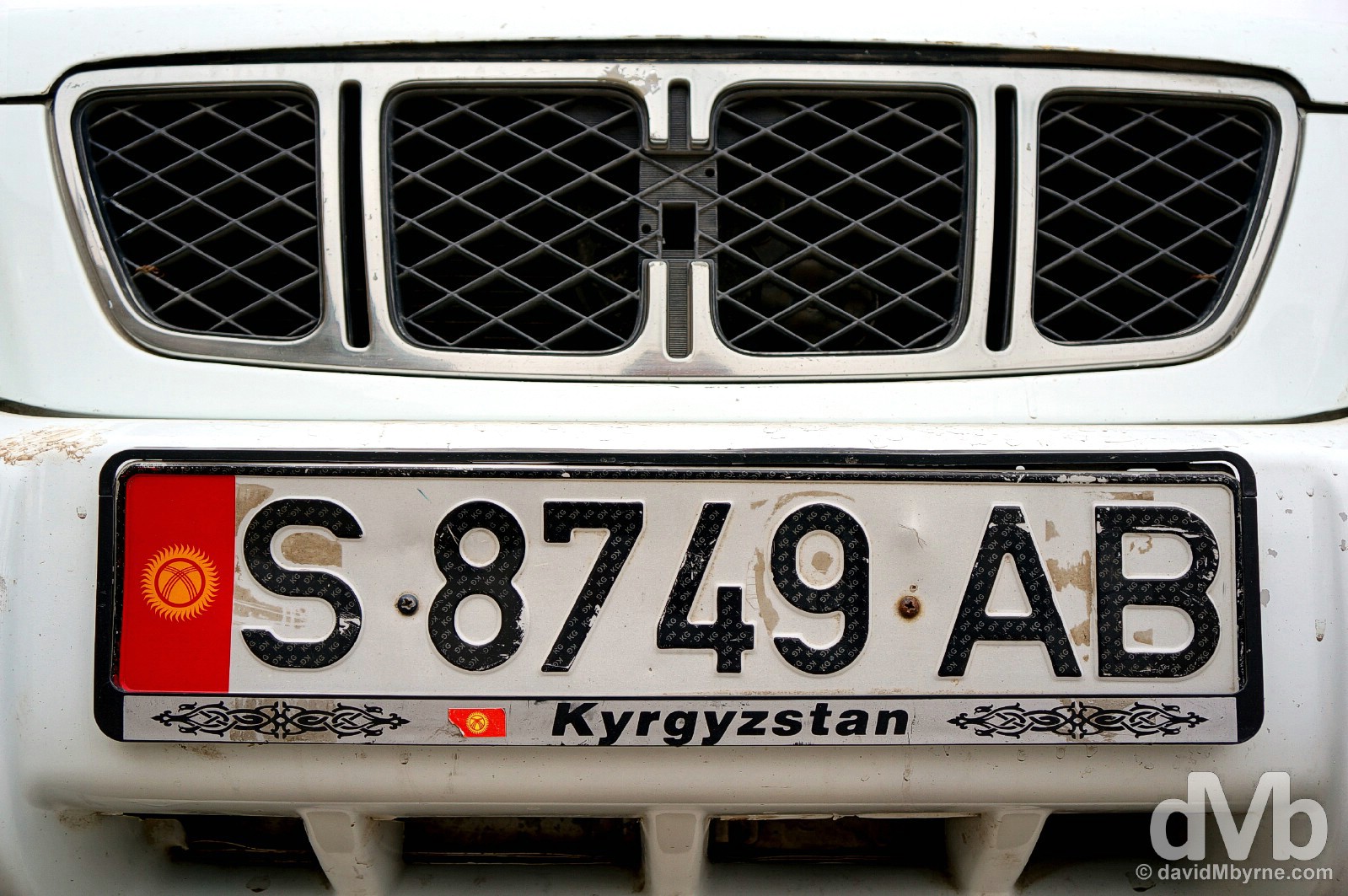
A Kyrgyz licence plate on the streets of Bishkek, Kyrgyzstan. February 25, 2015.
Obviously I was hoping the Iranians would have come through with my visa authorisation by now. Needless to say they haven’t. I’ll give them a few more days, not counting the right here & now weekend. I don’t have a no-Iran plan B; no Iranian visa also means no Turkmenistan visa either (long story), the latter a doubt even with an Iranian visa (it, Turkmenistan, is called the North Korea of Central Asia for a reason). An Iranian pass would be great – yes please, thank you very much – & so I’m continuing to hold out. But only for so long. How long (more) I’m not sure but there has to be a limit to how long I can amble the dusty Bishkek streets & sit in the sanctuary that is the city’s Sierra Café, the closest you’re going to find to a Starbucks – or any other well-known Western coffee chain or fast food outlet for that matter – in the country. And there’s little else to photograph either. Here are a few captures from the last few days. Just cos.
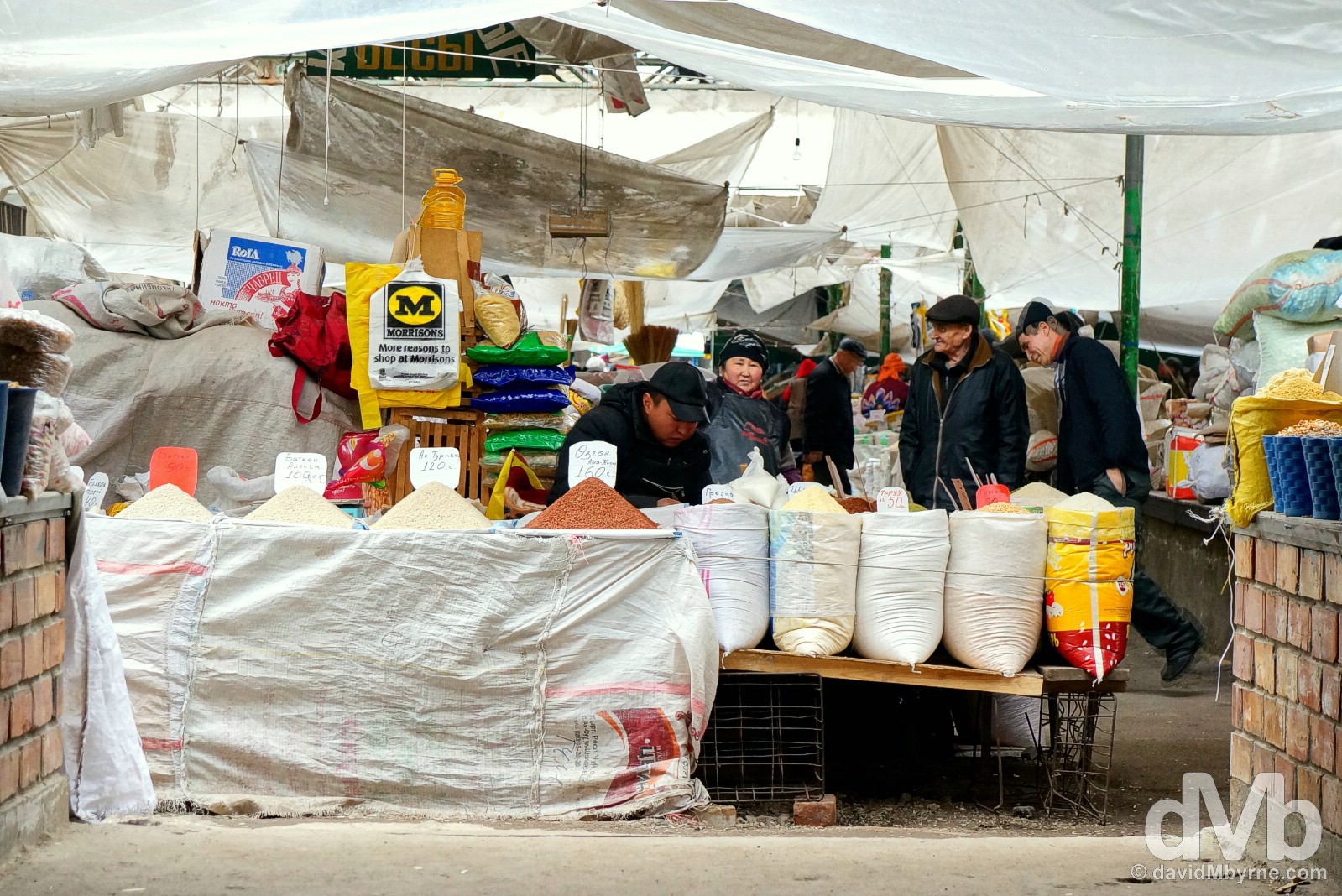
Osh Bazaar is the city’s main market, a visually chaotic ensemble of half-covered stalls, dark lanes & general mayhem. The vendors in here seem friendly enough – I garnered plenty of smiles and greetings – and don’t seem to mind photography; there are few walls in here never mind ‘No Photography’ signs upon which to mount them. That said, for some reason I didn’t feel comfortable in here with a camera in hand. I might pay the market another visit before I leave the city. At the very least it’ll pass a few hours. Notice the bags from Morrisons, one of Britain’s largest supermarket chains. Bizarrely the market stalls were awash with these. Osh Bazaar, Bishkek, Kyrgyzstan. February 25, 2015.
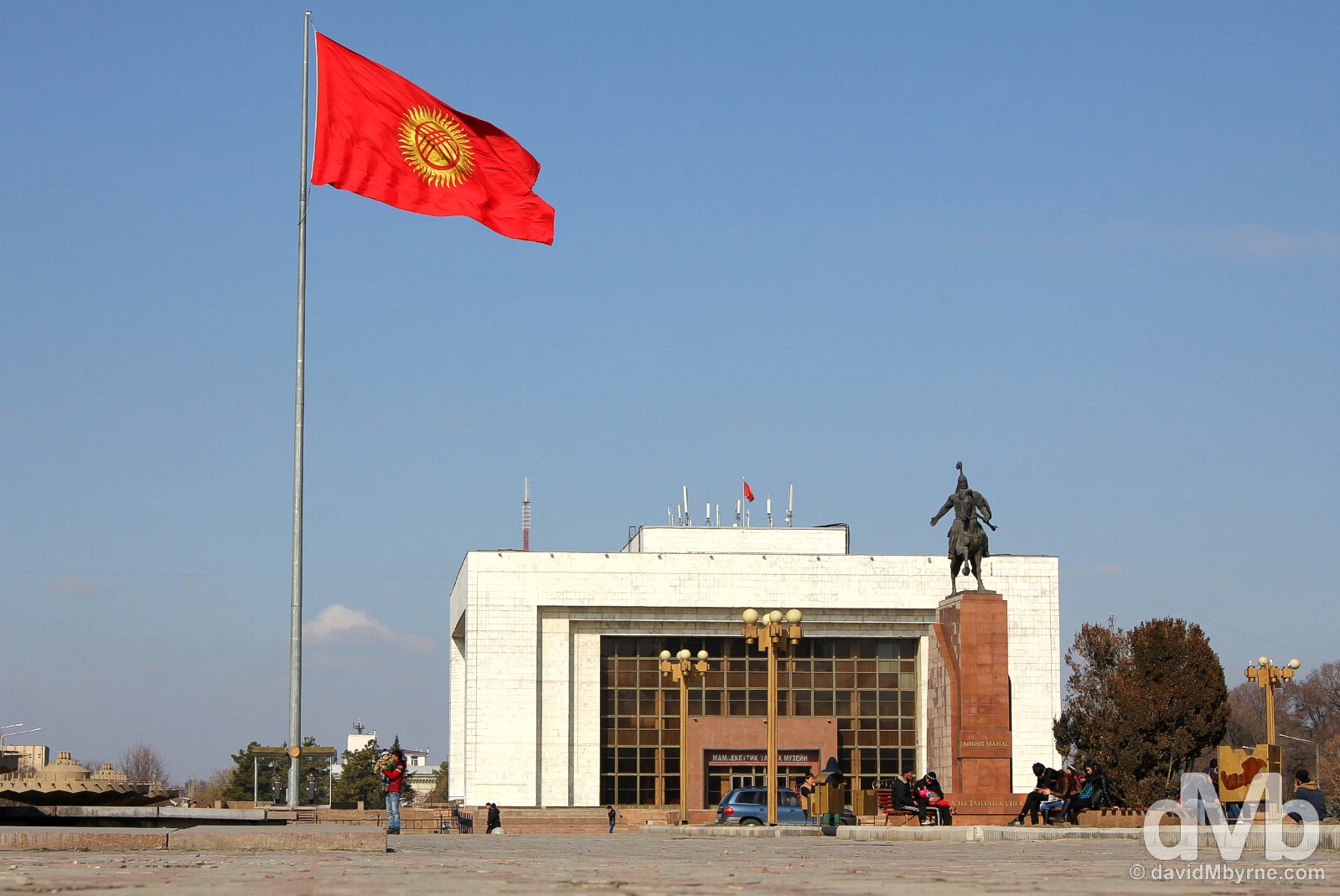
All roads in Bishkek lead to the city’s Ala-Too Square. It’s slim pickings but it & and the Soviet-era buildings surrounding it are the main, some would say only, show in town. On this particular day, the only blue sky day (for the morning at least) Bishkek has treated me to thus far, it was looking particularly photogenic. The boxy State Historical Museum, formally the Lenin Museum, the Manas Statue & flagpole of Ala-Too Square as seen from across Chuy Prospektesi in central Bishkek, Kyrgyzstan. February 27, 2015.
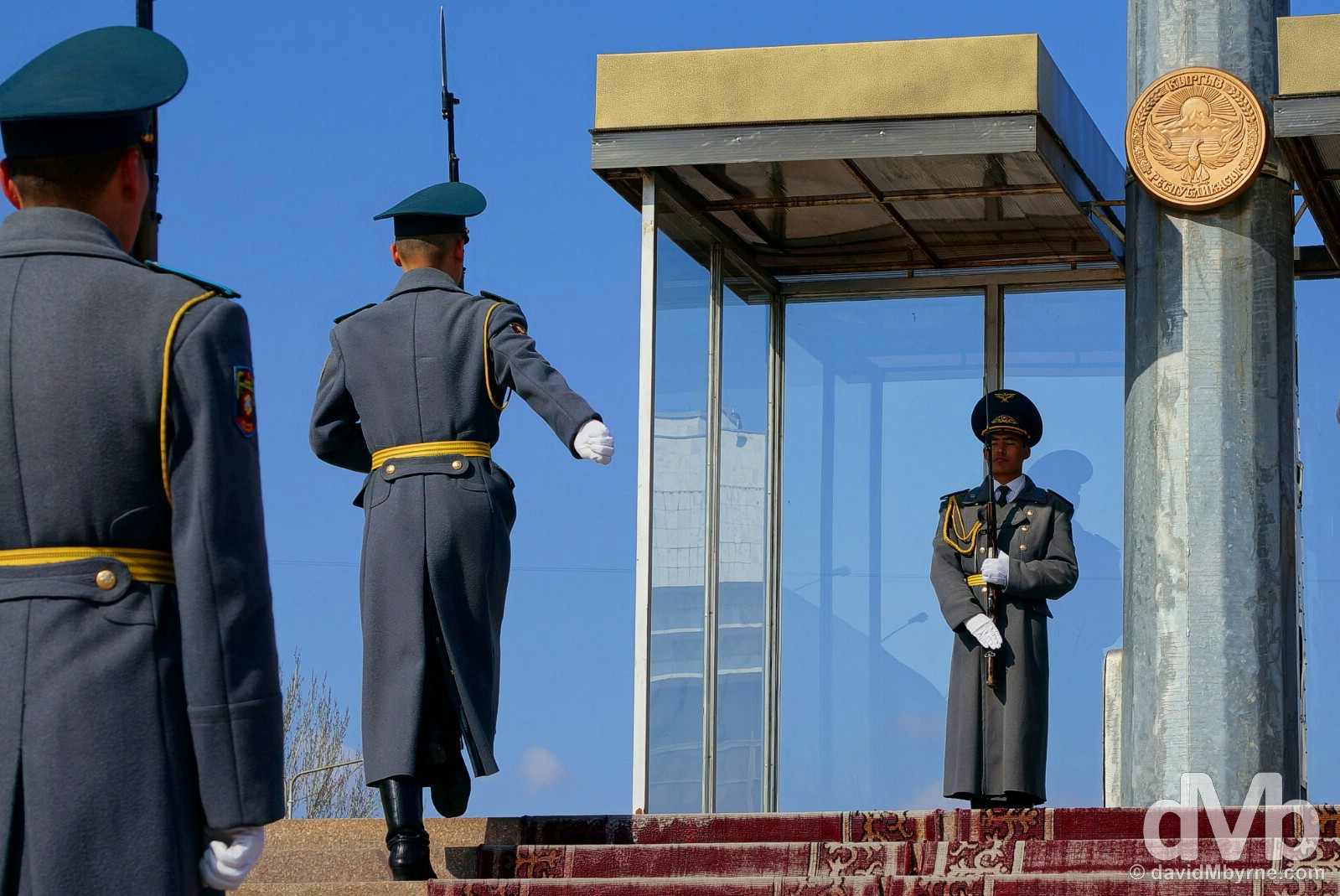
The ceremonial changing of the guard at the base of the flagpole in Ala-Too Square, central Bishkek, Kyrgyzstan. February 27, 2015.
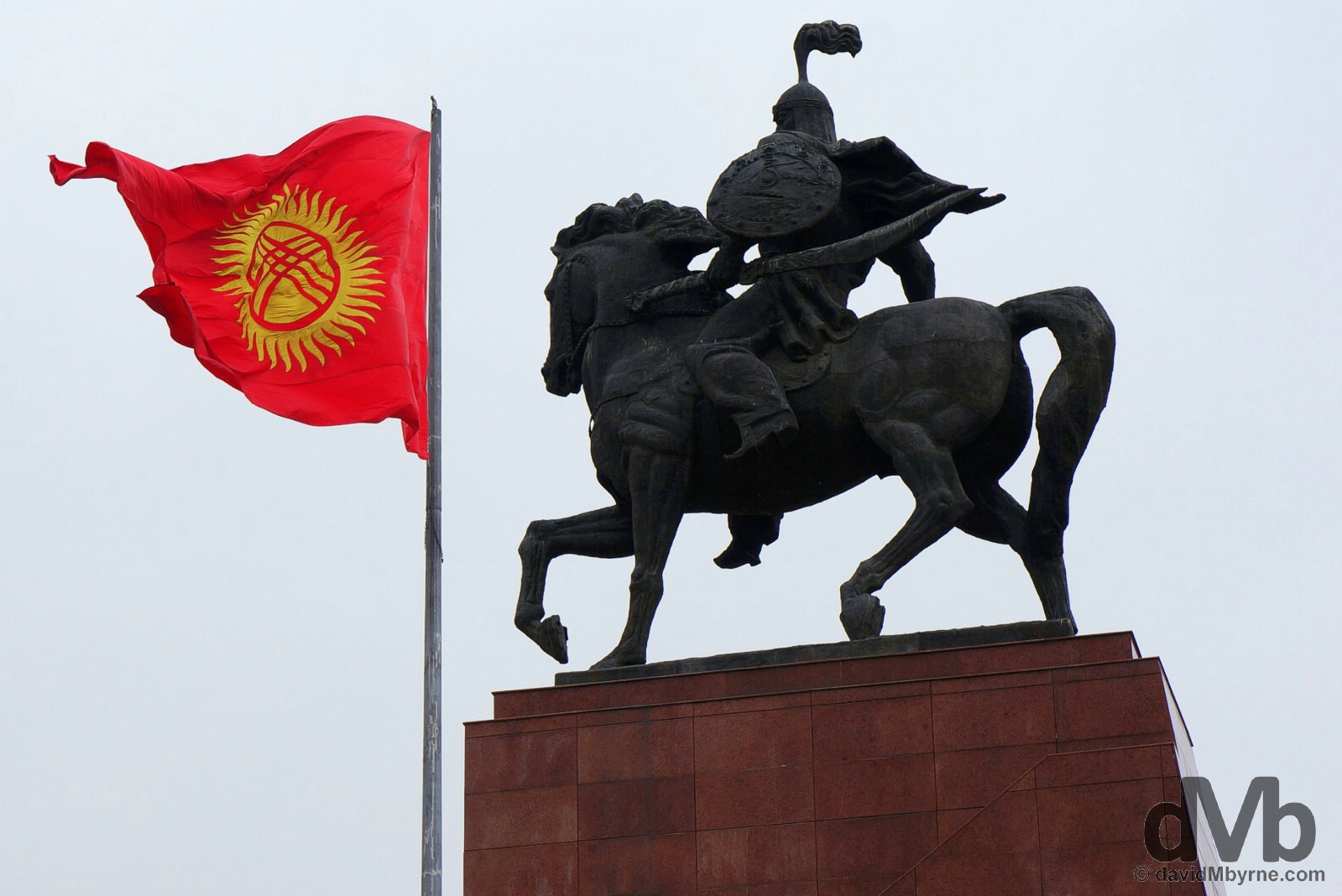
The clouds had rolled in again by the time I took this picture of the square’s Manas statue and the Kyrgyz flag, the largest in the country. As told by the epic oral legend of the same name, one that is 20 times longer than Homer’s Odyssey, Manas was an heroic warrior who unified the Kyrgyz tribes & carved out a homeland for the Kyrgyz people in the face of hostile Mongol hordes. The story, which was only committed to paper in the mid-19th century, has become a cultural rallying point since Kyrgyz independence in 1991 and today Manas statues are found all over the country, many displacing statues of ex-Soviet power-hitters. The Kyrgyz flag is a yellow sun set on a red (symbolising bravery and valor) background. The sun, representing peace and wealth, sprouts 40 rays, one for each of the tribes unified by Manas against the Mongols. It is crossed by two sets of three lines, a stylized representation of the tündük, or crown of the traditional Kyrgyz yurt. It signifies the family home or, by extension, the universe, & is replicated in many facets of Kyrgyz architecture. Ala-Too Square, Central Bishkek. February 25, 2005.
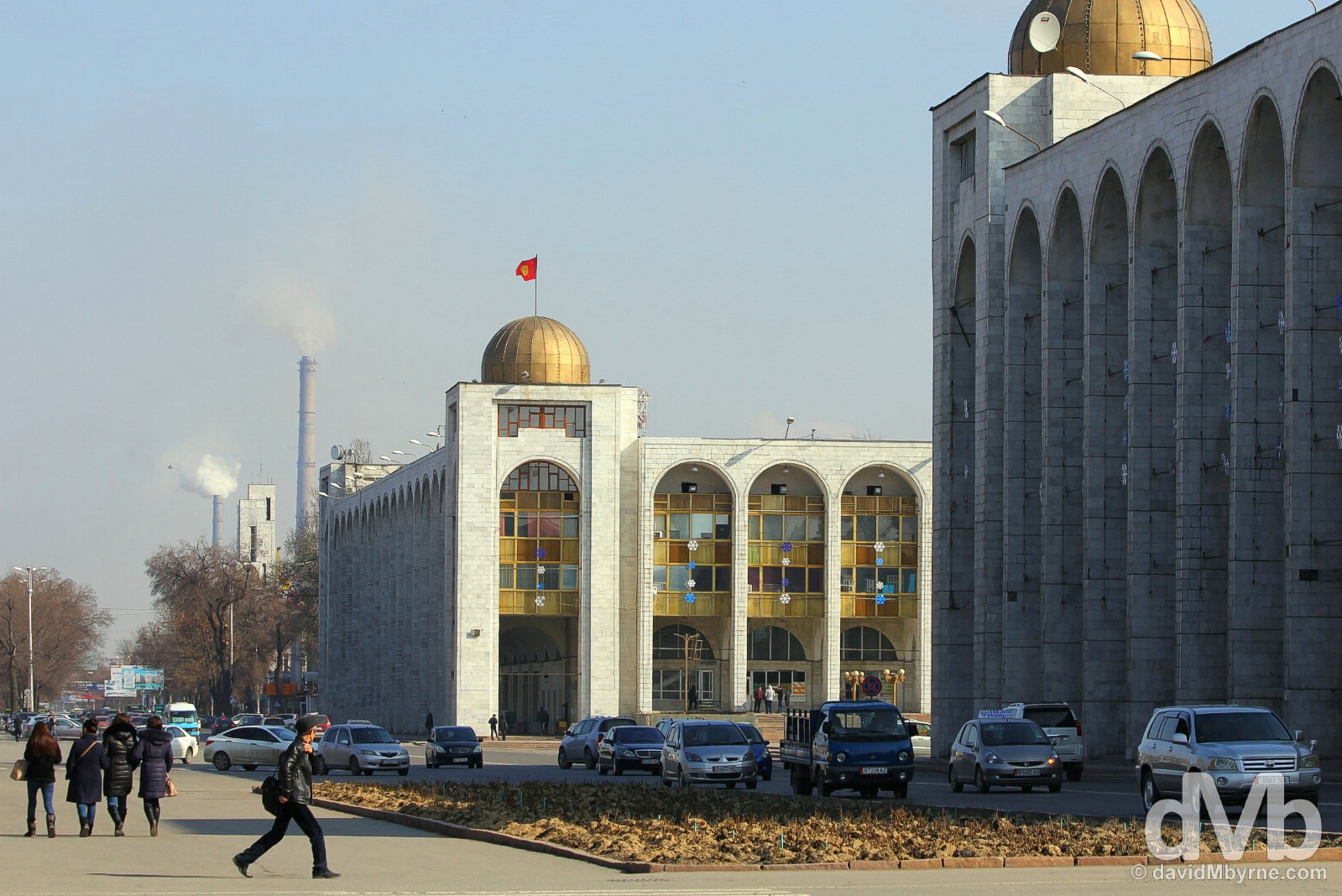
Cars on Chuy Prospektesi passing through Ala-Too Square in central Bishkek, Kyrgyzstan. February 27, 2015.
BISHKEK - MOVING ON
Date || March 2, 2015
Location || Bishkek, Kyrgyzstan ( )
)
I’m no stranger to changes in my travel plans. Generally life gets the way, things change, yada yada yada. But rarely do my plans change en route. Once in motion things generally pan out as I had hoped & planned. Not this trip however. Things had already changed prior to today with the cancellation of North Korea tour. Today Iran, & by extension Turkmenistan, bit the dust. I just gave up waiting – after submitting an application for visa authorisation to the Iranian authorities on February 13th last, and waiting ever since, including the last 8 days here in Bishkek, Kyrgyzstan, I just cut my losses. So today I feel like I’m resuming the trip, heading south to Kyrgyzstan’s second city, Osh, before crossing the border into Uzbekistan. That was always the plan but the old Itinerary would have seen me continue on through Turkmenistan and into Iran. However, I have formulated a plan B & now I’ll be flying from Uzbekistan to the Caucasus – I’ll fly north when I envisaged going south overland. Iran will join North Korea by staying on my bucket. I’m a tad miffed – NK & Iran were the 2 standout locations on this trip – but not overly so. And at least I’m moving again.
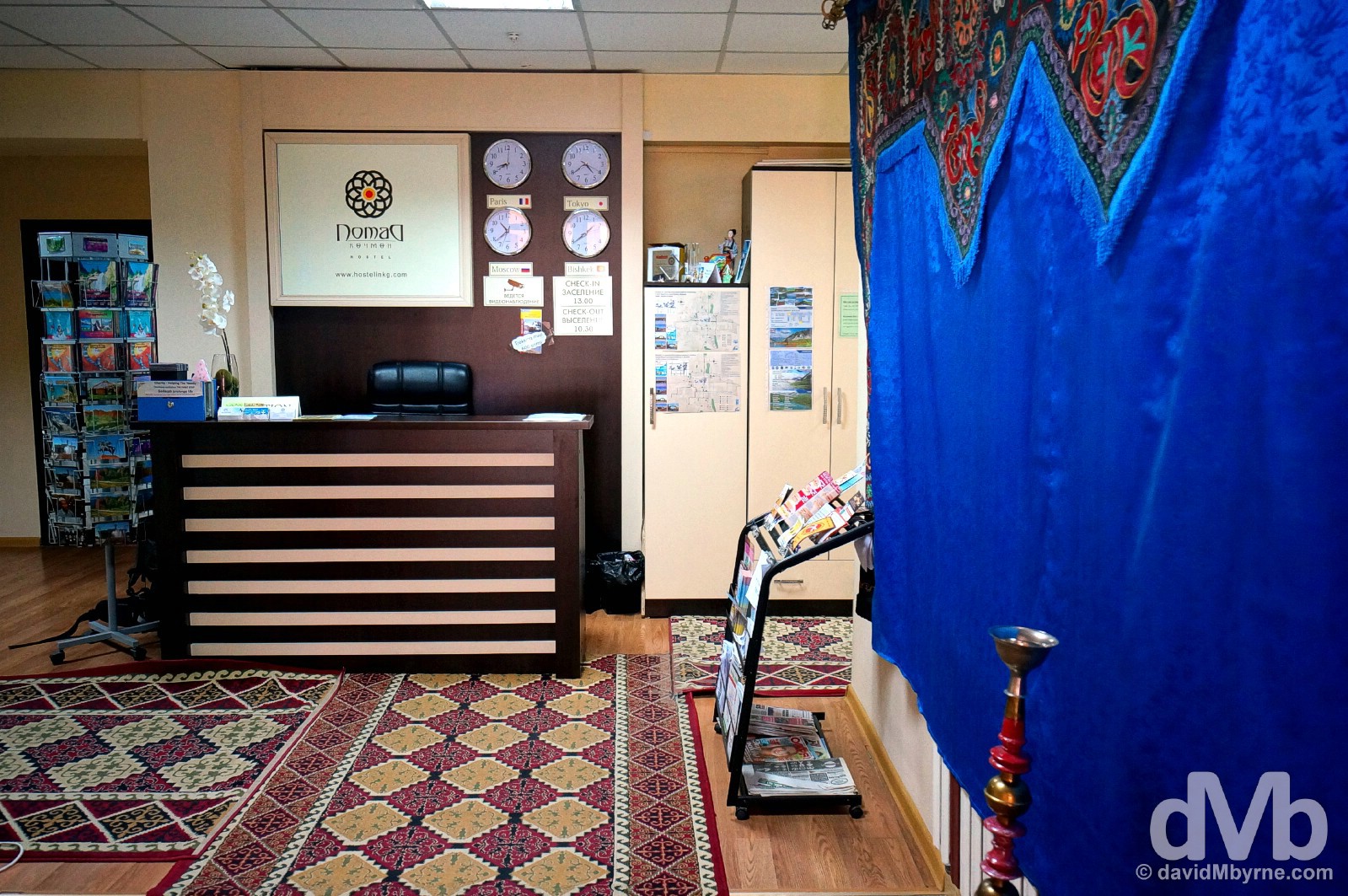
Nomad hostel in Bishkek, home for 8 whole nights. I’ve rarely stayed somewhere as long, but I’ve rarely stayed somewhere as nice; Nomad made the (ultimately fruitless) wait just about bearable. Bishkek, Kyrgyzstan. March 2, 2015.
OSH - THE SOUTH
Date || March 3, 2015
Location || Osh, Kyrgyzstan ( )
)
Allegedly Osh is older than Rome. So say the locals. Whether it is or not it’s no doubt old & it looks & feels every bit its age.
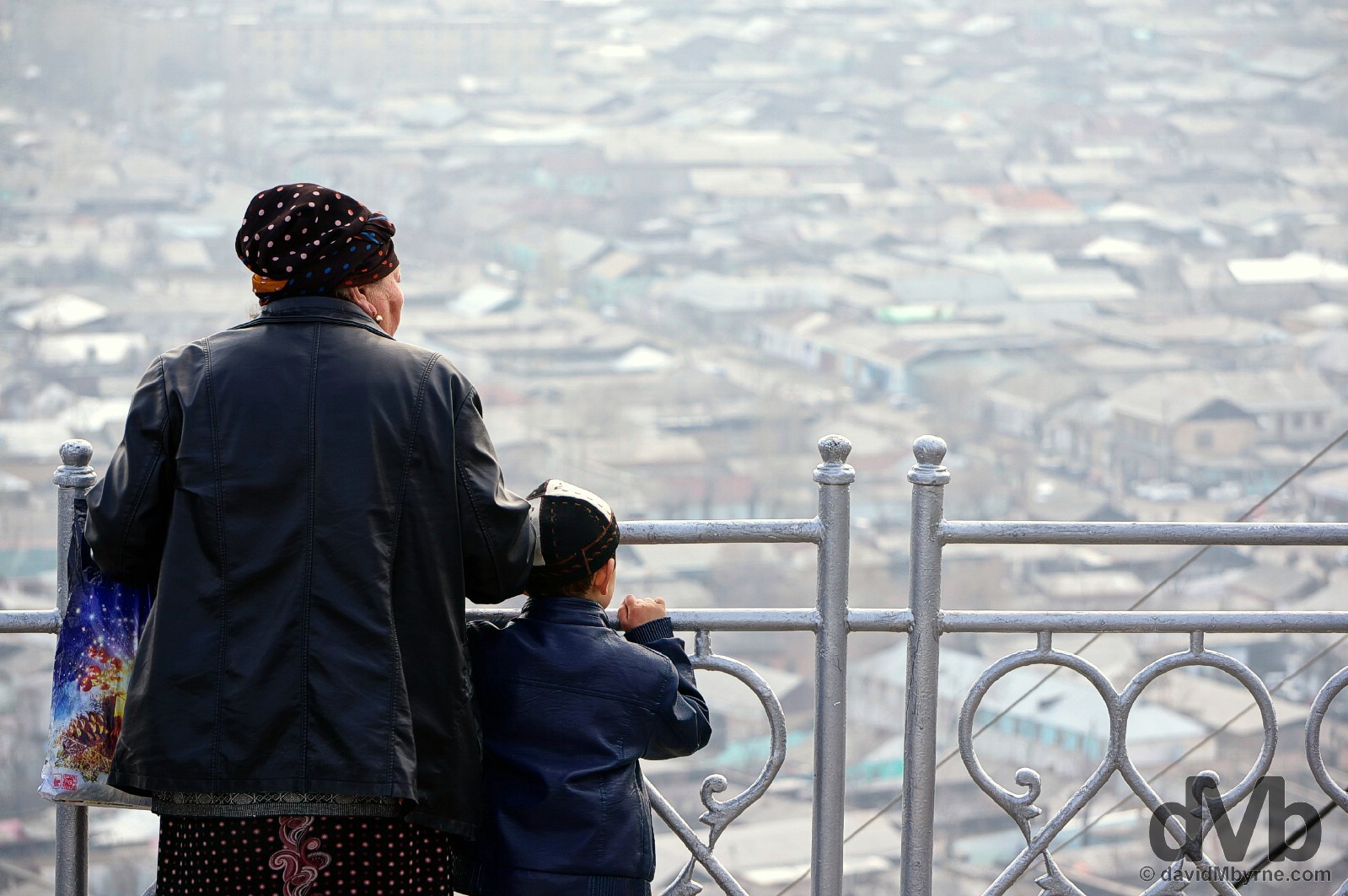
Taking in the views from the main viewpoint on UNESCO-listed Suleiman Too (Solomon’s Throne) in Osh, southern Kyrgyzstan. March 3, 2015.
There’s history here. Osh was a major crossroad on the famed Central Asian Silk Road & the city has drawn traders for centuries. The traders are still here today, doing their thing in the city’s bazaar, one of Central Asia’s biggest.
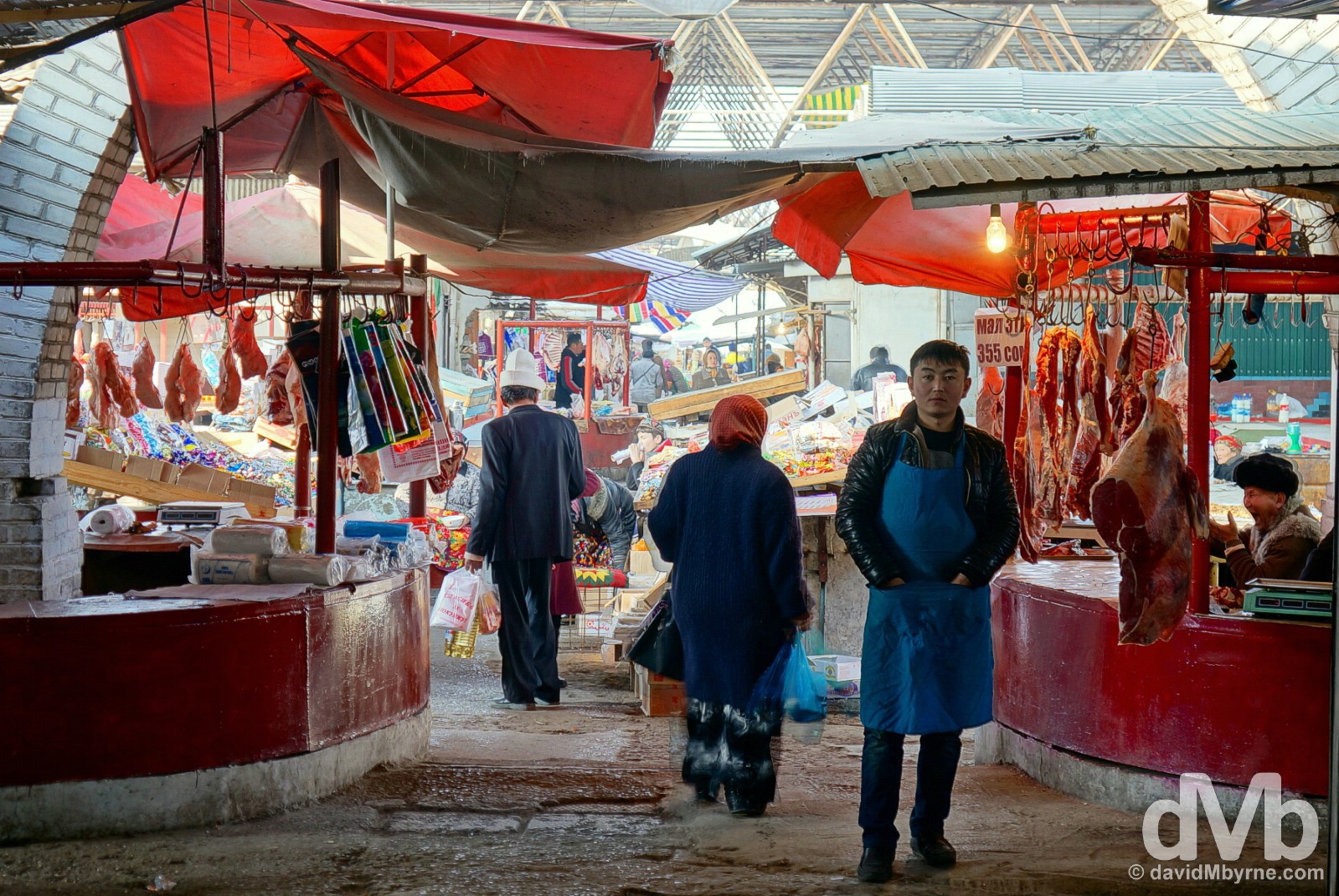
A section of the bazaar in Osh. One of Central Asia’s biggest markets, it sells just about everything in a typically bustling market environment. Innumerable lanes and stalls stretch haphazardly for about 1 kilometre along the bank of the city’s Ak-Buura River (more like a stream). Osh, southern Kyrgyzstan. March 3, 2015.
Historic Osh
Osh also boasts Kyrgyzstan’s only UNESCO World Heritage listed site, Suleiman Too (Solomon’s Throne), a rocky crag (some claim it to be a full-blown mountain) looming over the town. I visited both the bazaar & crag/mountain today on a day when I feel I have finally arrived in Central Asia proper. There’s a totally different look & feel down here compared to the industrialised, Russified north – Osh’s bustling, dusty, chaotic streets teeming with hardworking, weather-beaten & unfailingly hospitable locals is more how I envisioned Central Asia to be.
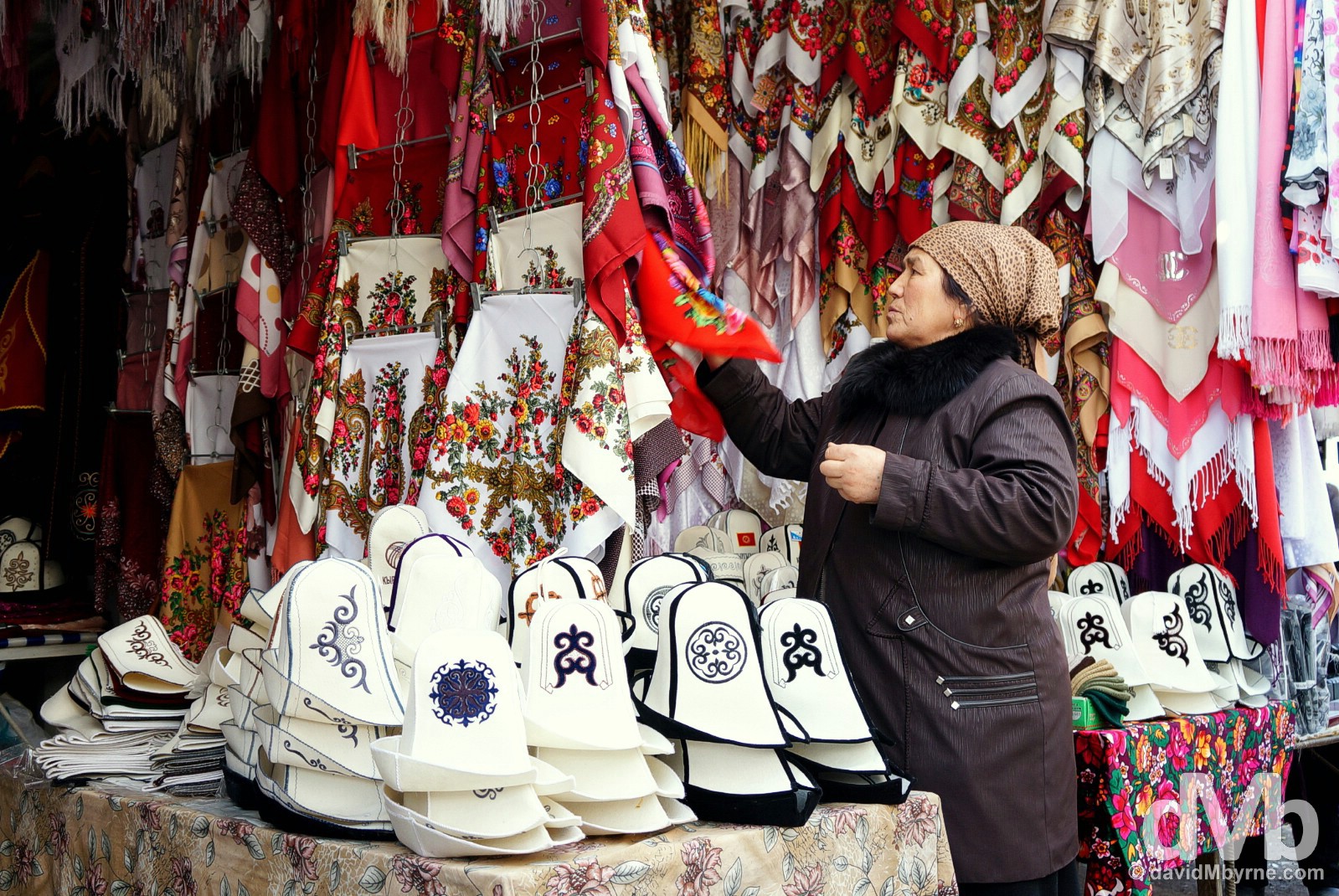
Silk scarfs & traditional white Kyrgyz ak-kalpak hats on sale at a stall in the bazaar in Osh, southern Kyrgyzstan. March 3, 2015.
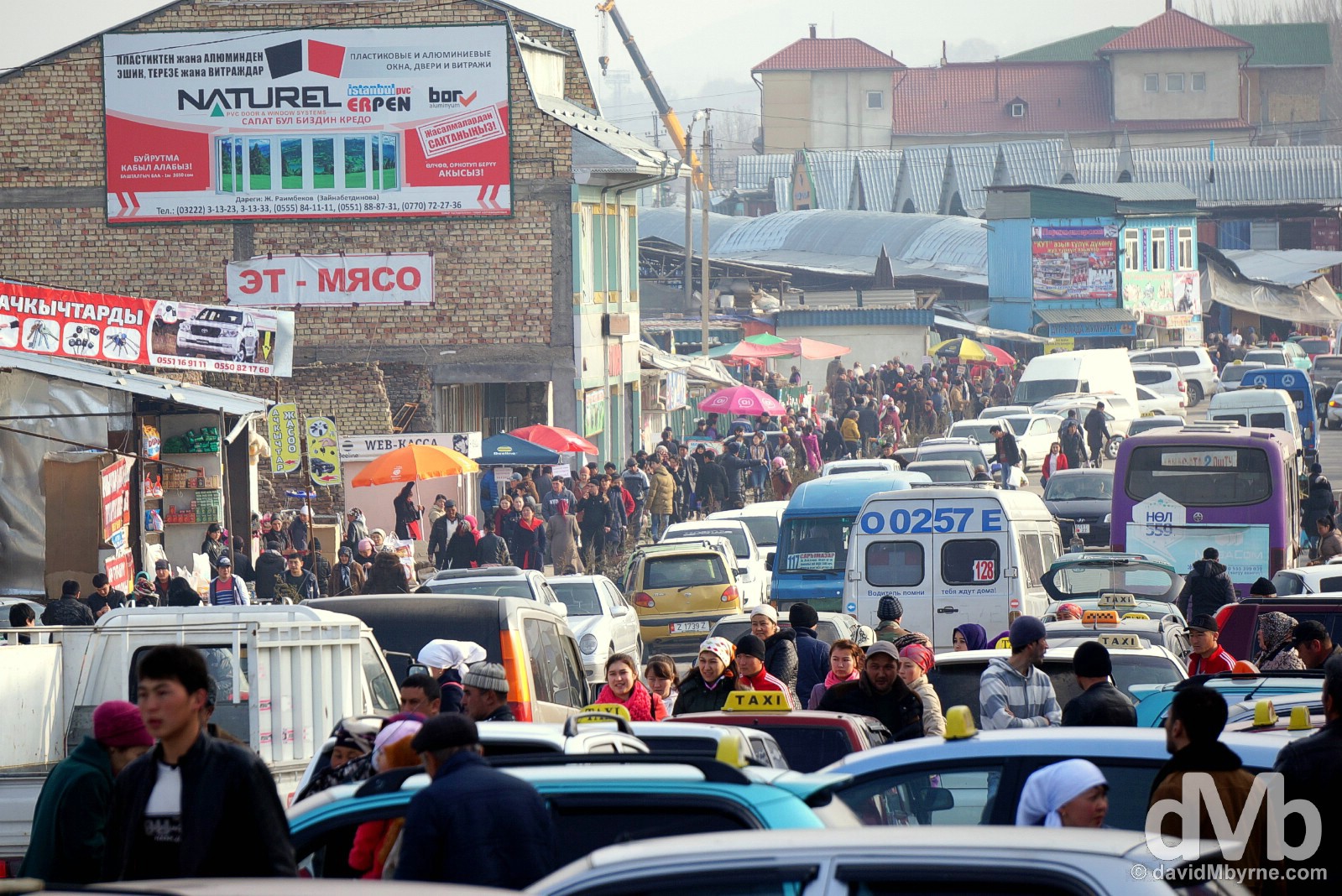
Activity outside the bazaar lining the Ak-Burra River in Osh, southern Kyrgyzstan. March 3, 2015.
Suleiman Too (Solomon’s Throne)
A UNESCO World Heritage site in Osh. Well I never. Suleiman Too is a big chunk of rock looming over the western edge of the city. Boasting 5 distinctive peaks, the highest of which tops out at 191 metres, the crag is some 2 kilometres long & between 500 metres & 800 metres wide. Dotted with petroglyphs & ancient revered sites, mostly caves & crevices, one of which houses a neat Cave Museum, it has been a place of worship for centuries – supposedly the Prophet Mohammed once prayed here – & today it is considered the most complete example of a sacred mountain in Central Asia, hence the UNESCO listing.
– UNESCO commenting on Sulaiman-Too Sacred Mountain
All that is well & good but it was the views down over a sprawling Osh that were the highlight of the crag for me.
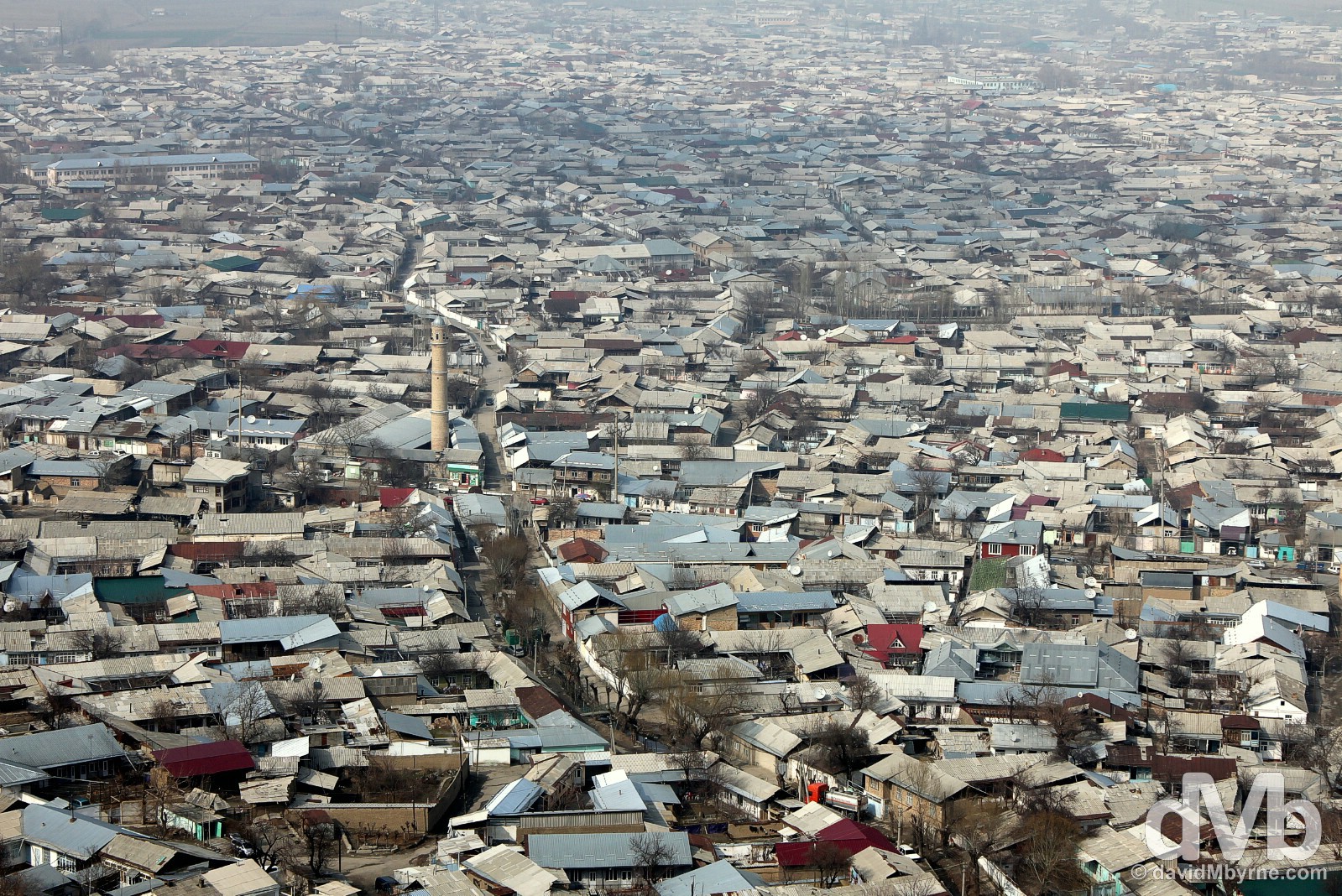
A section of northern Osh as seen from the main viewpoint on UNESCO-listed Suleiman Too (Solomon’s Throne). Osh, southern Kyrgyzstan. March 3, 2015.
A few other pictures from ambling around Osh today, my last day in Kyrgyzstan.
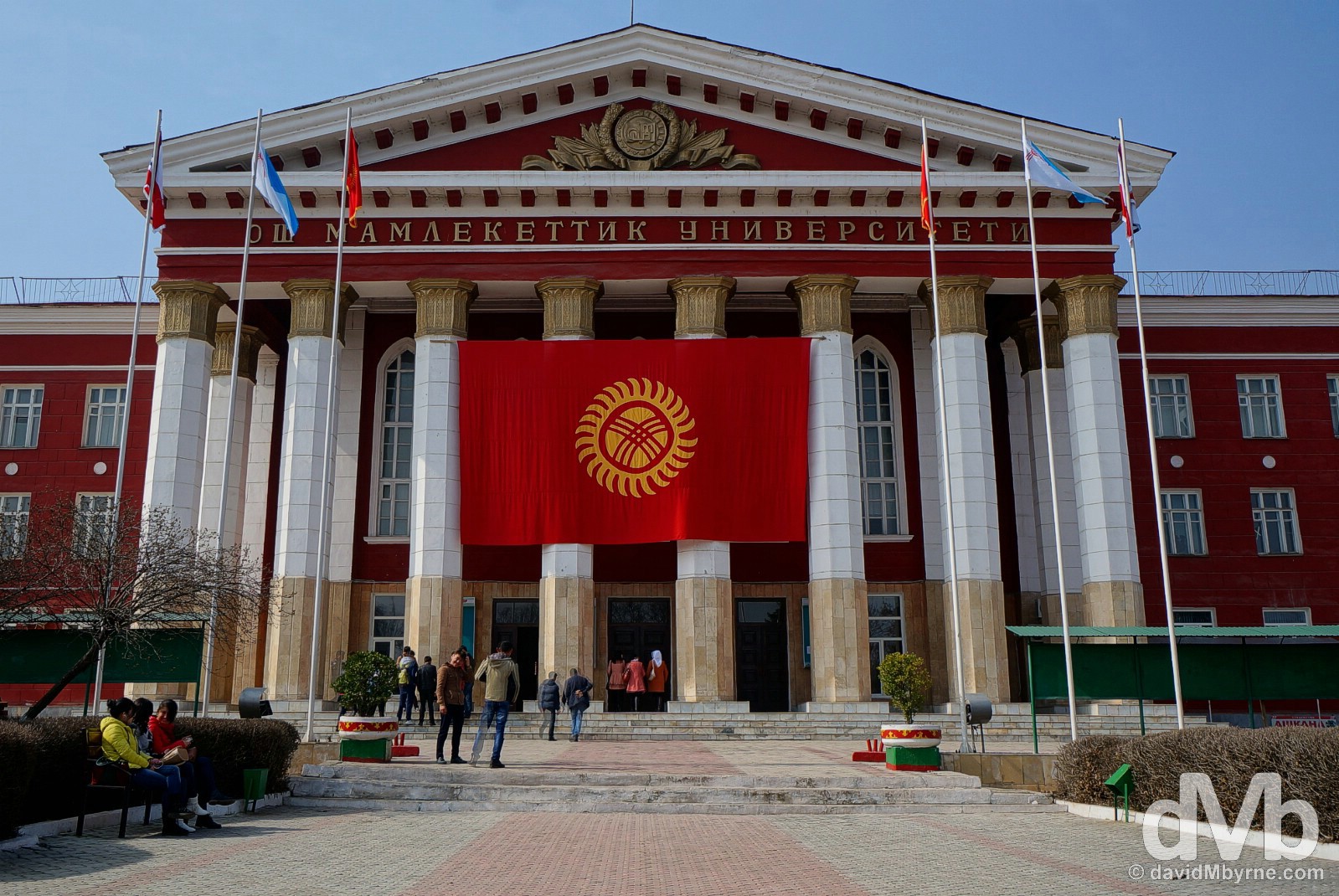
It seems the architectural budget for Osh was a modest one. There’s little of architectural merit, Soviet-era or otherwise, in the city, which is surprising given the city’s age. This was probably the most visually appealing building I saw all day, the attractive crimson university in the centre of the city. I was told this was a university building by a student who befriended me at the Suleiman Too viewpoint earlier in the day. She wanted to practice her English and was keen to point out Osh landmarks to me from our vantage point high over the city. She wasn’t the only friendly face in Osh today – a lot of locals greeted me and tried to make conversion, something I didn’t experience once up north. Yes, it’s a different, more hospitable world down here alright. Osh, southern Kyrgyzstan. March 3, 2015.
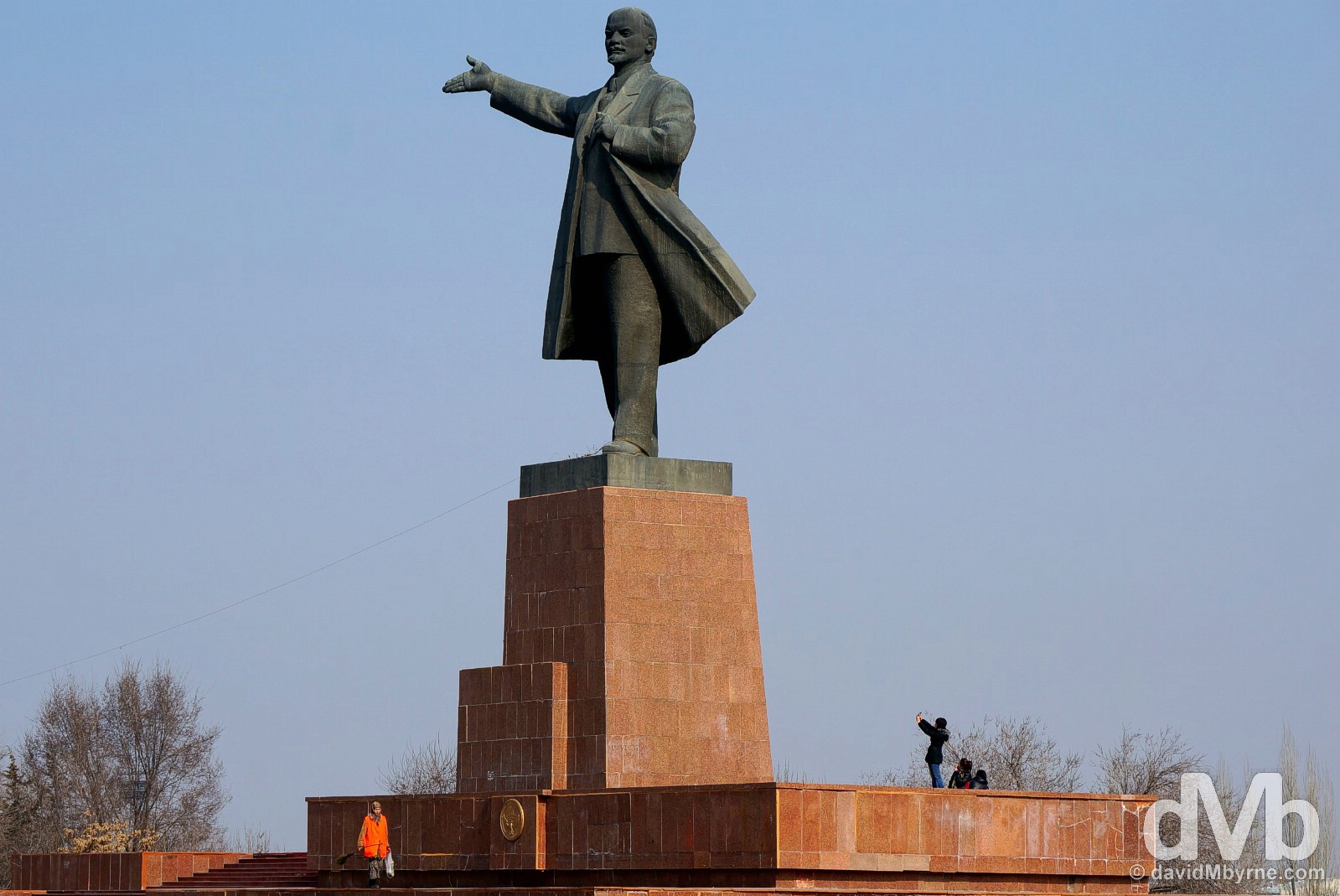
Yes, he’s here too. One of the most impressive & last remaining statues of Lenin in Central Asia is here in Osh. For now. Osh, southern Kyrgyzstan. March 3, 2015.
Tomorrow I bid adieu to Kyrgyzstan and will cross the border into Uzbekistan, only 10 kilometres from Osh. I’ll be heading for a city called Kokand the Islamic Uzbek Fergana Valley, which Osh rests on the edge of. Seemingly I’ve left the Russified Central Asia behind and Osh is a good introduction for what the valley, & Uzbekistan, is all about. So no more Lenin statues I take it.

I must say you have high quality posts here.
Your content should go viral. You need initial traffic only.
How to get massive traffic? Search for; Murgrabia’s tools go viral